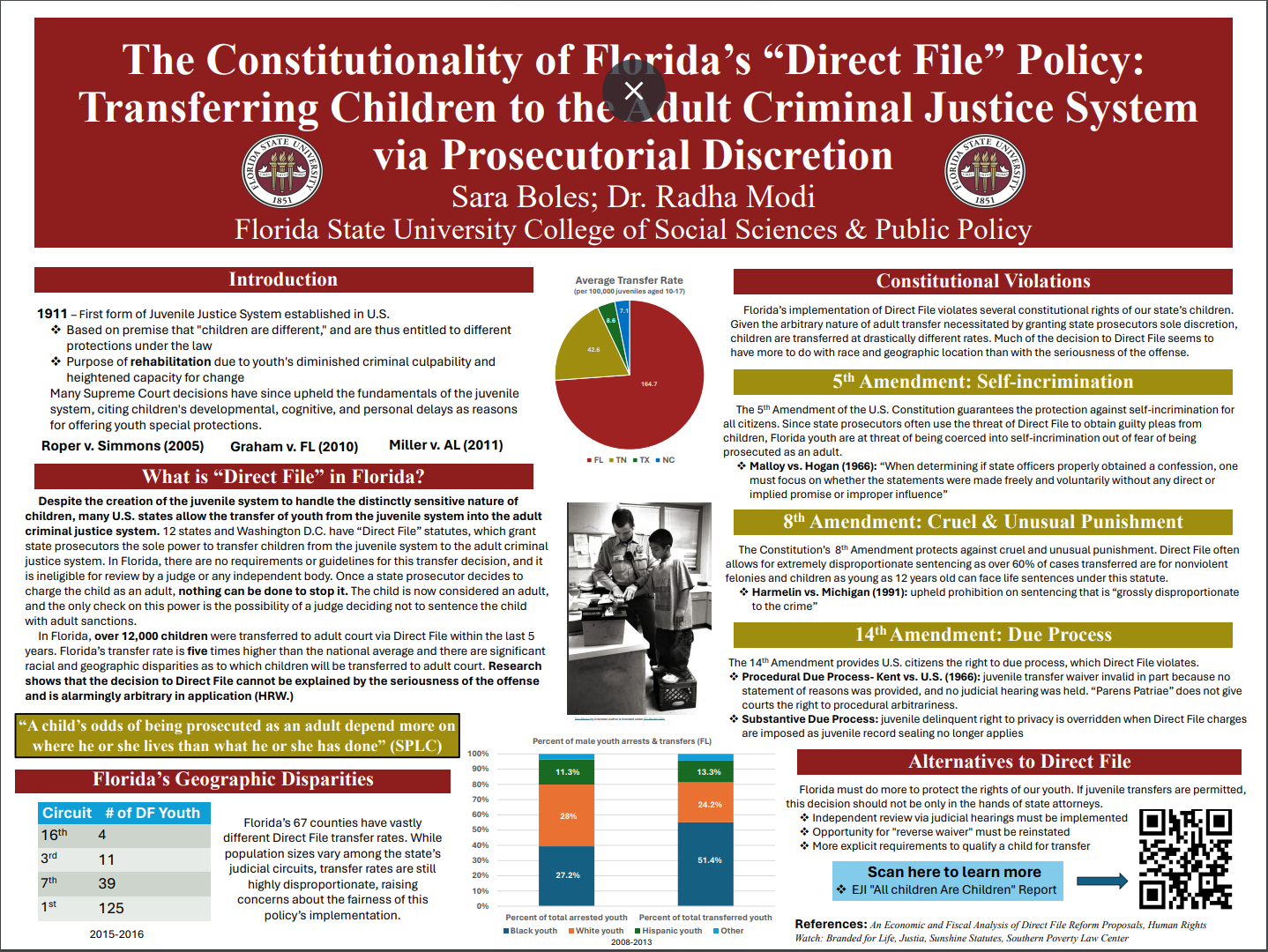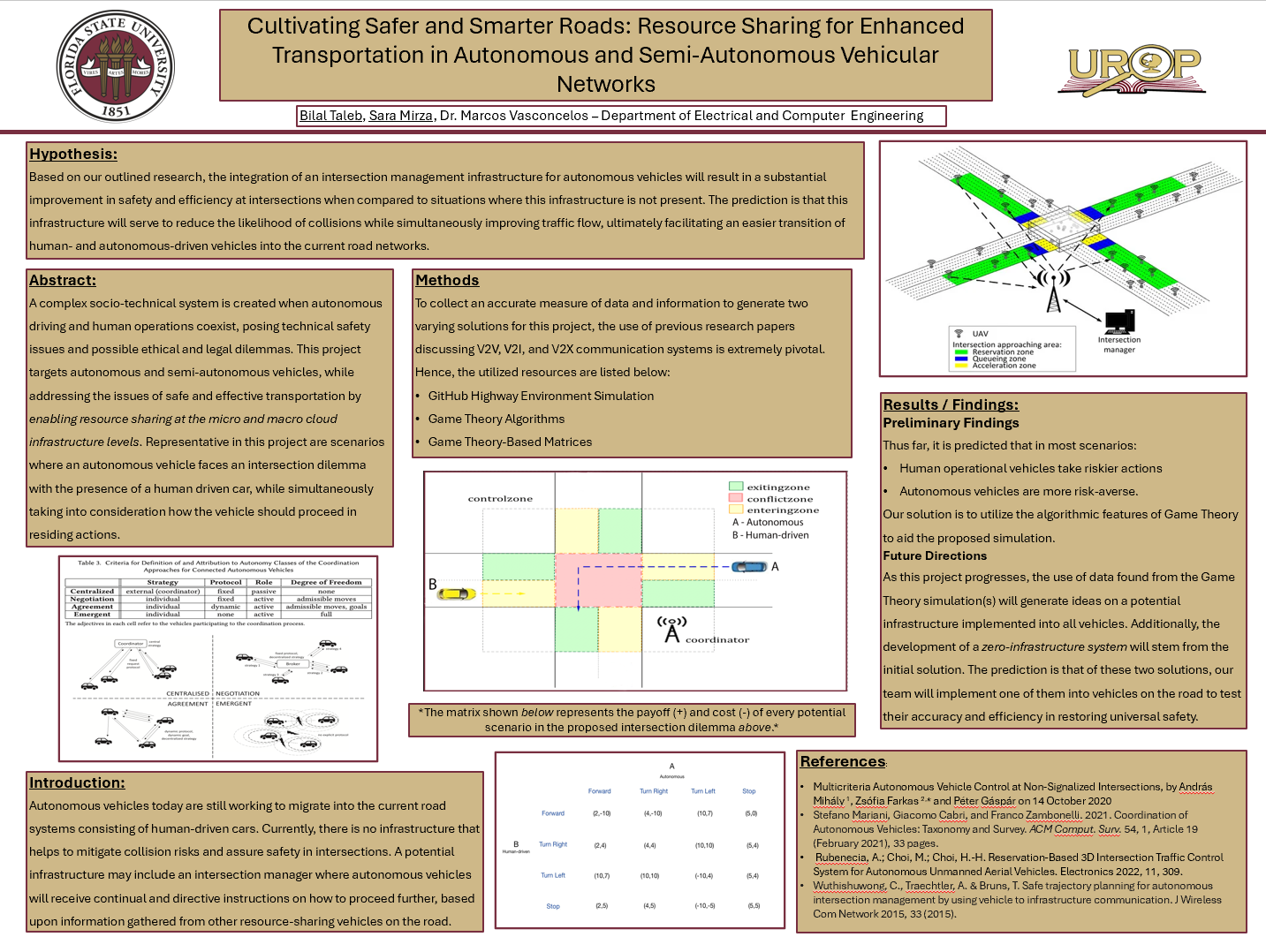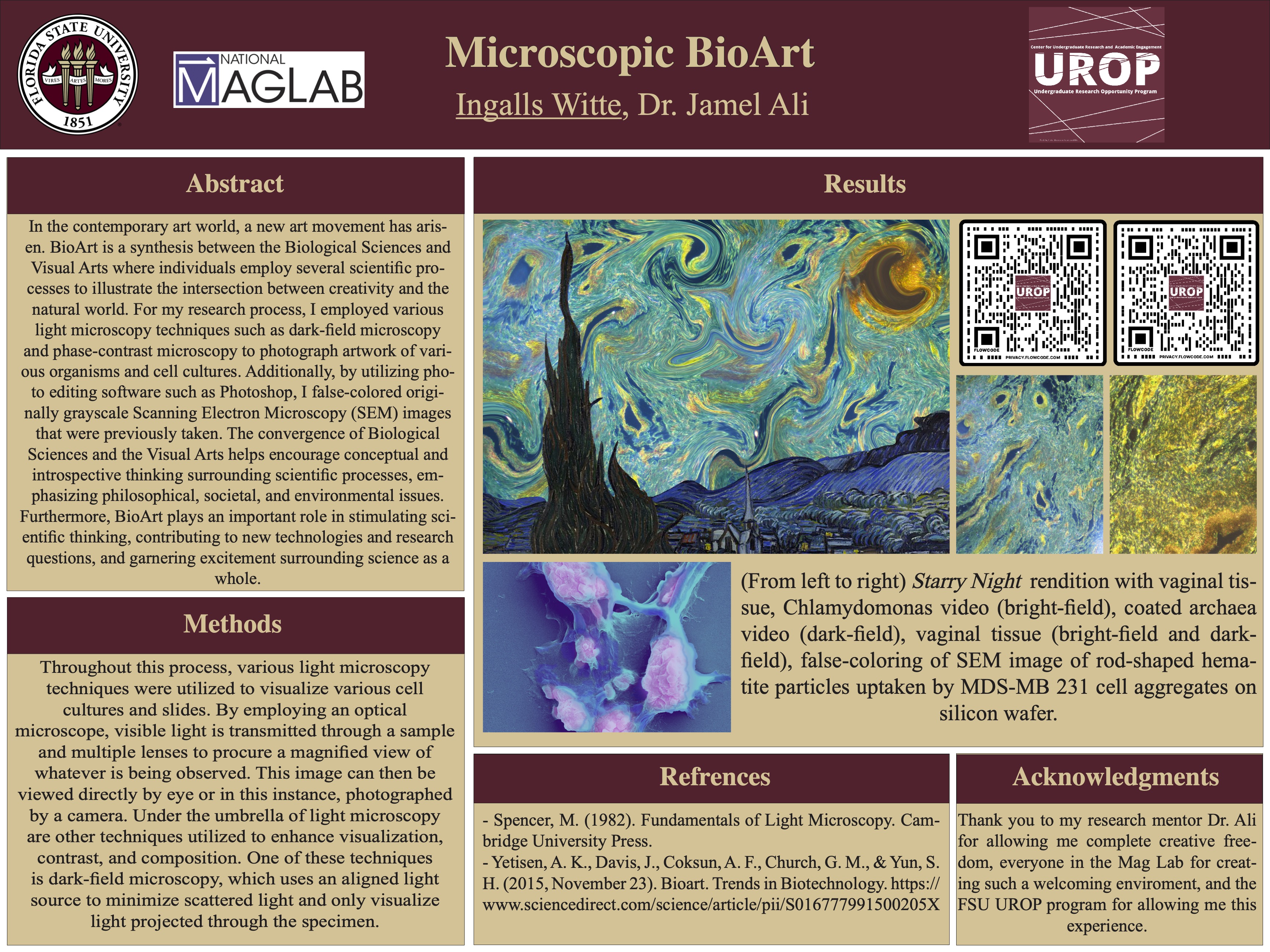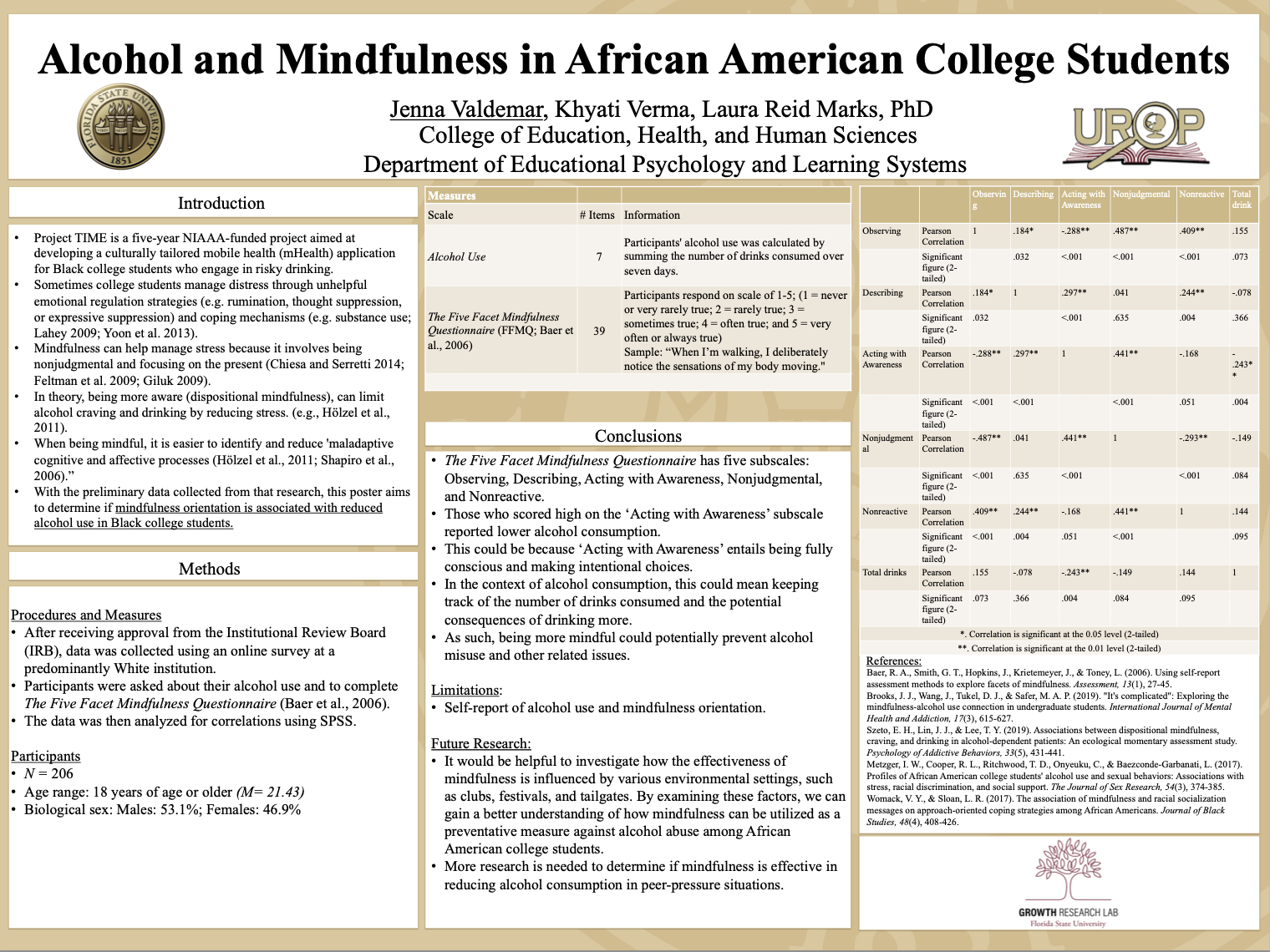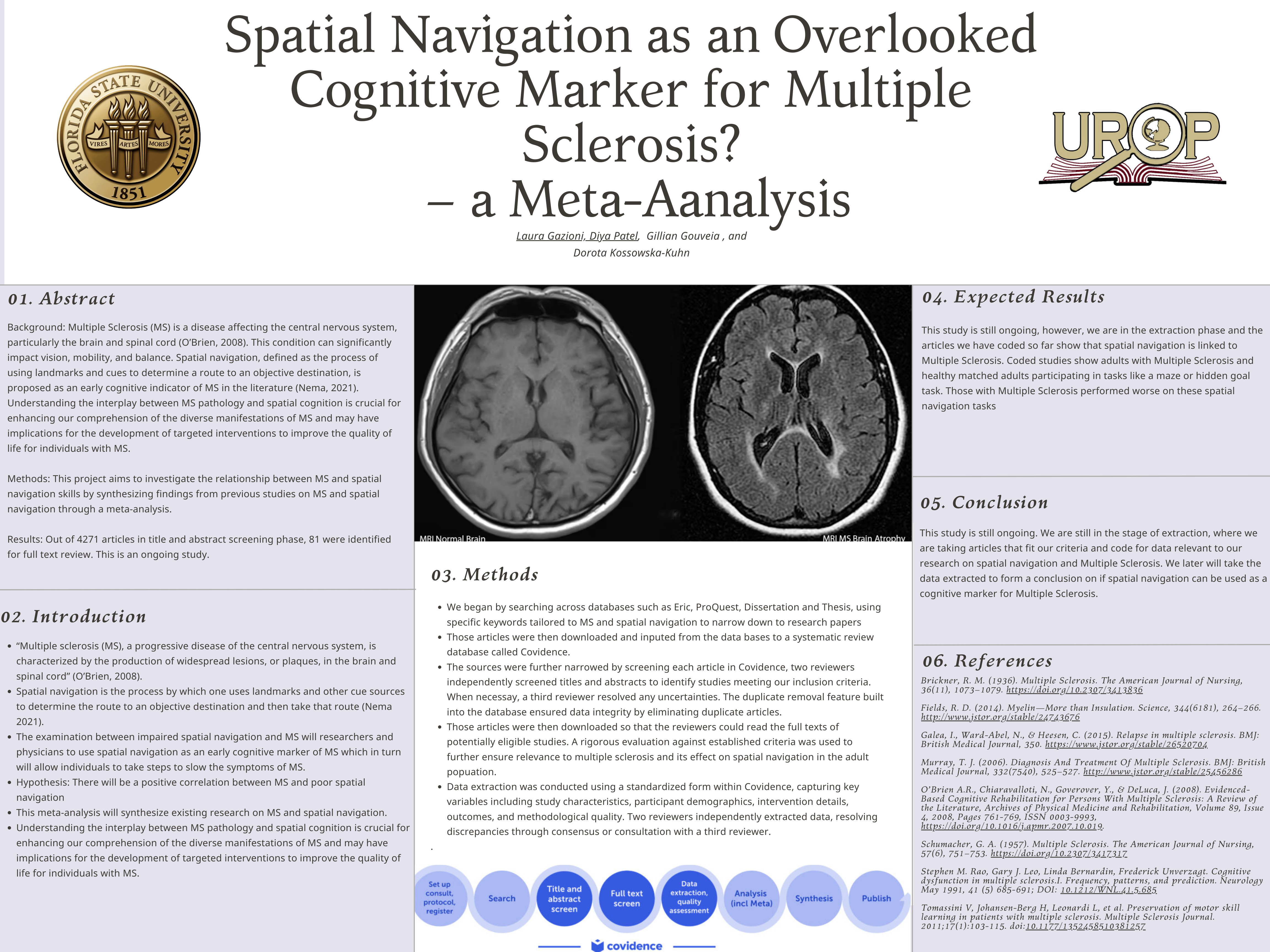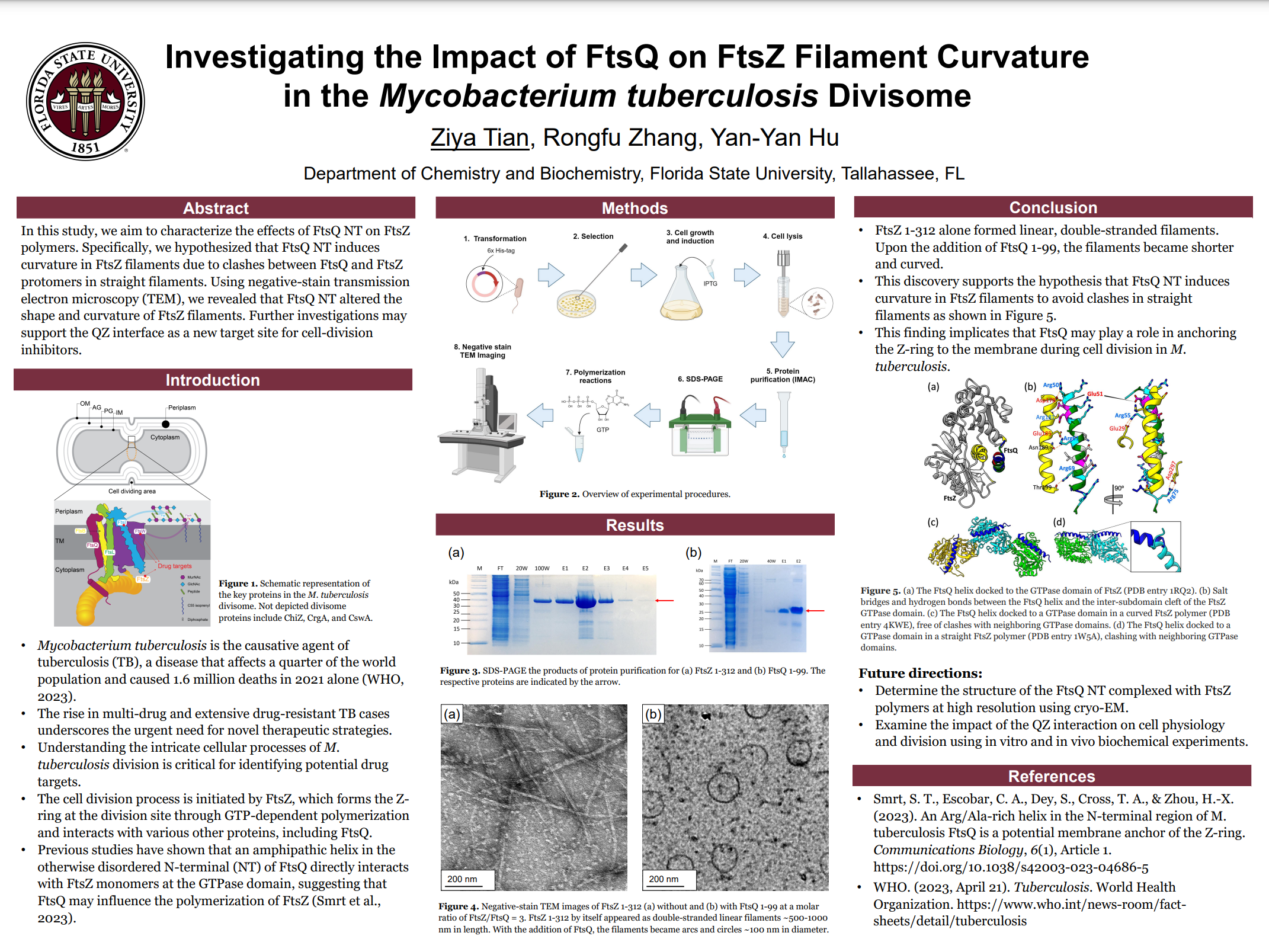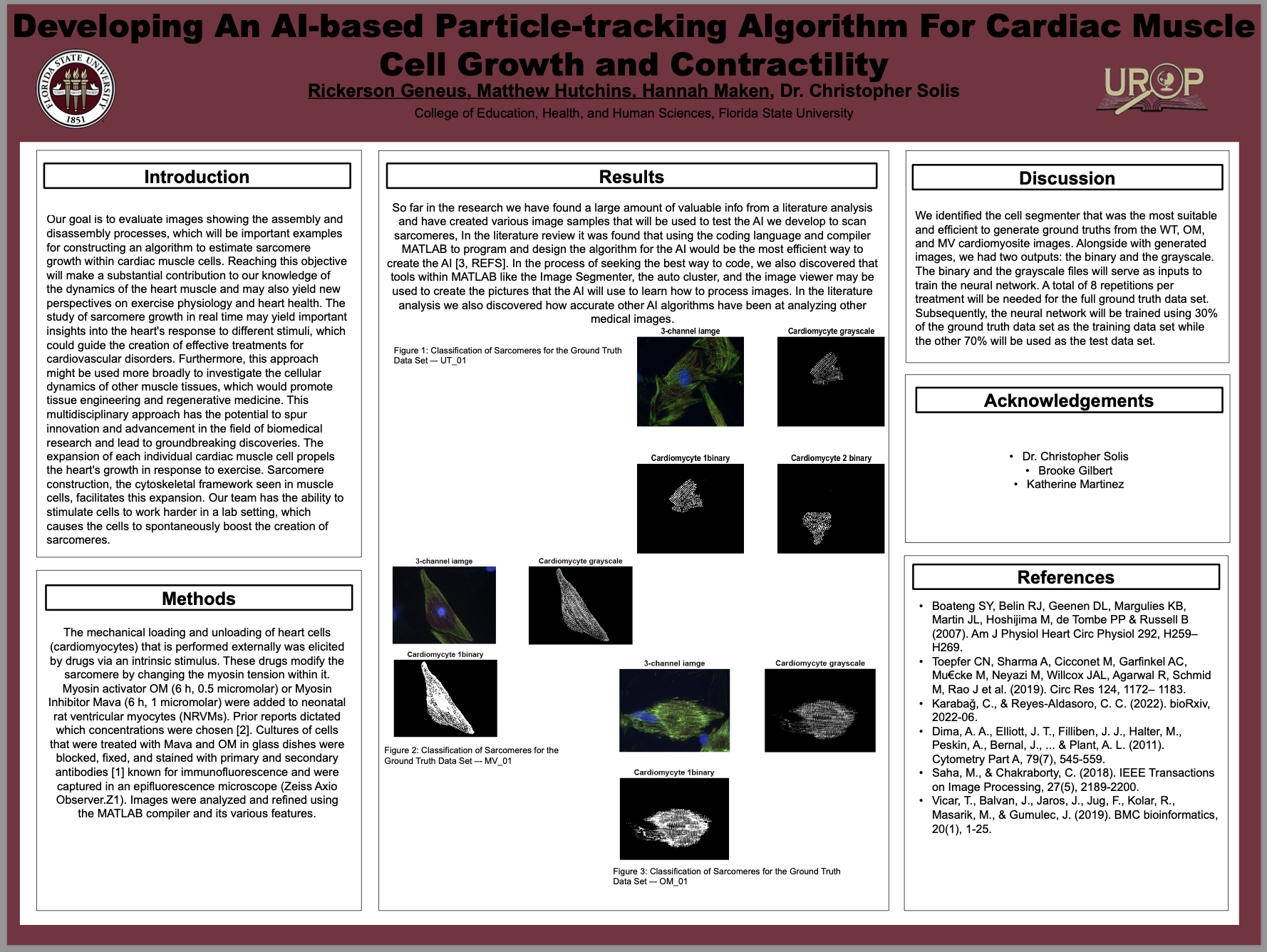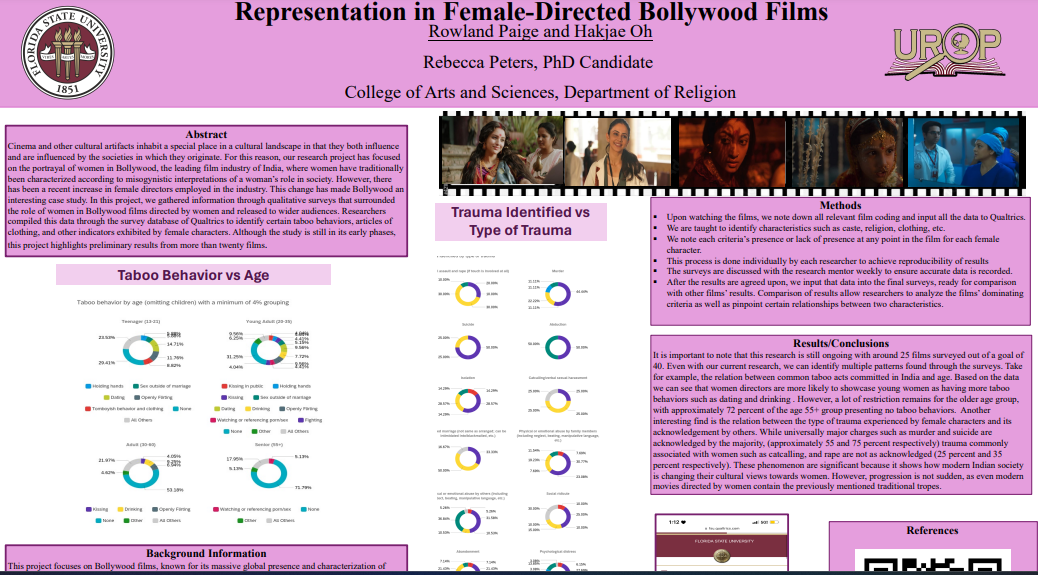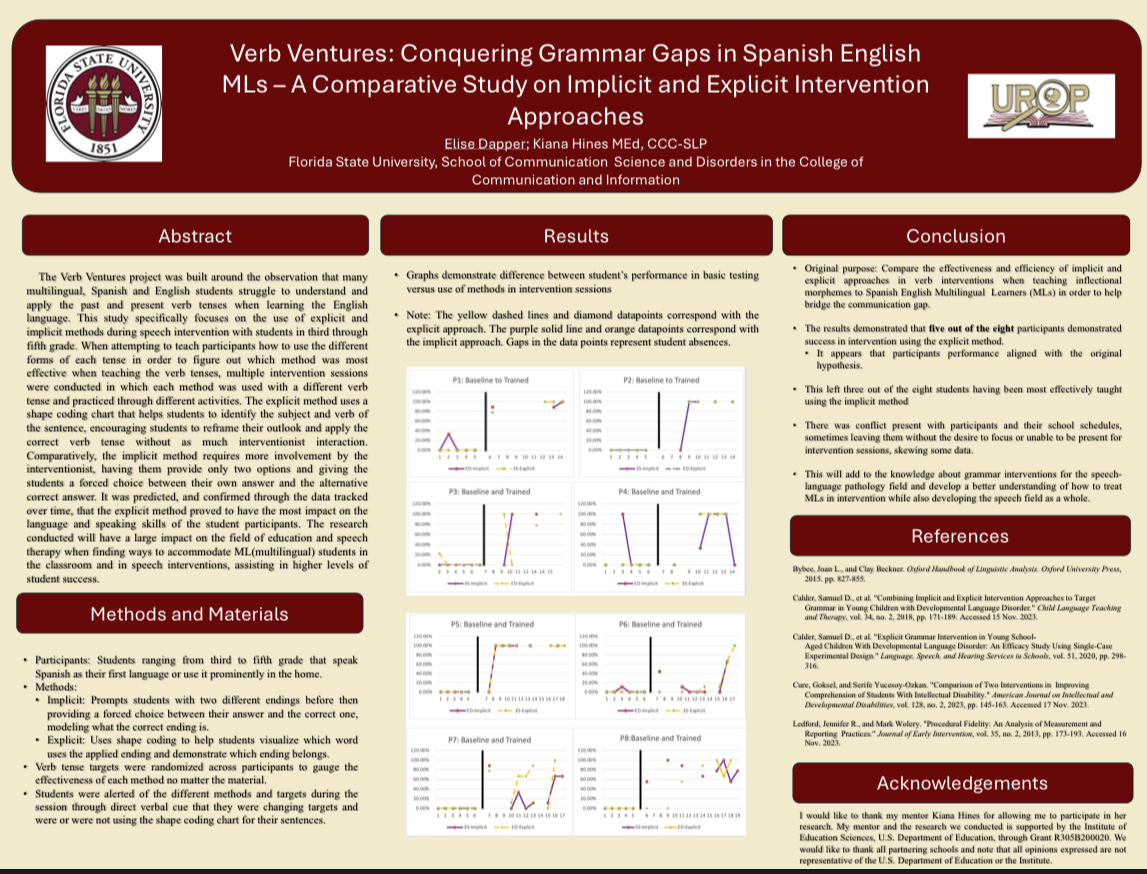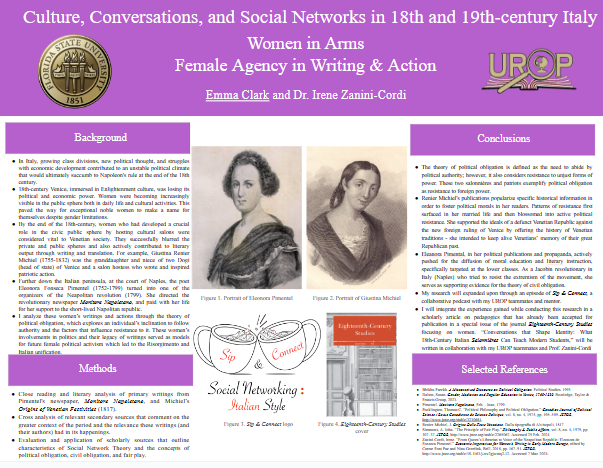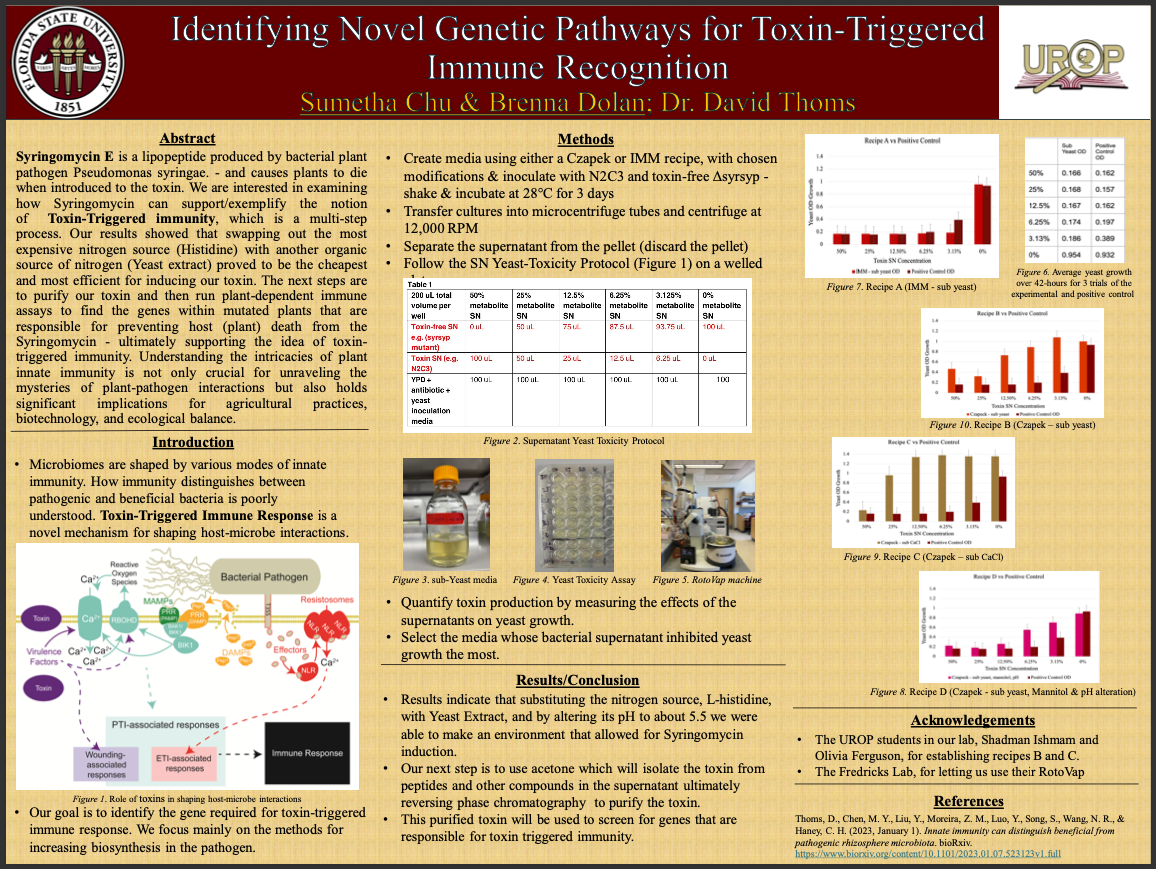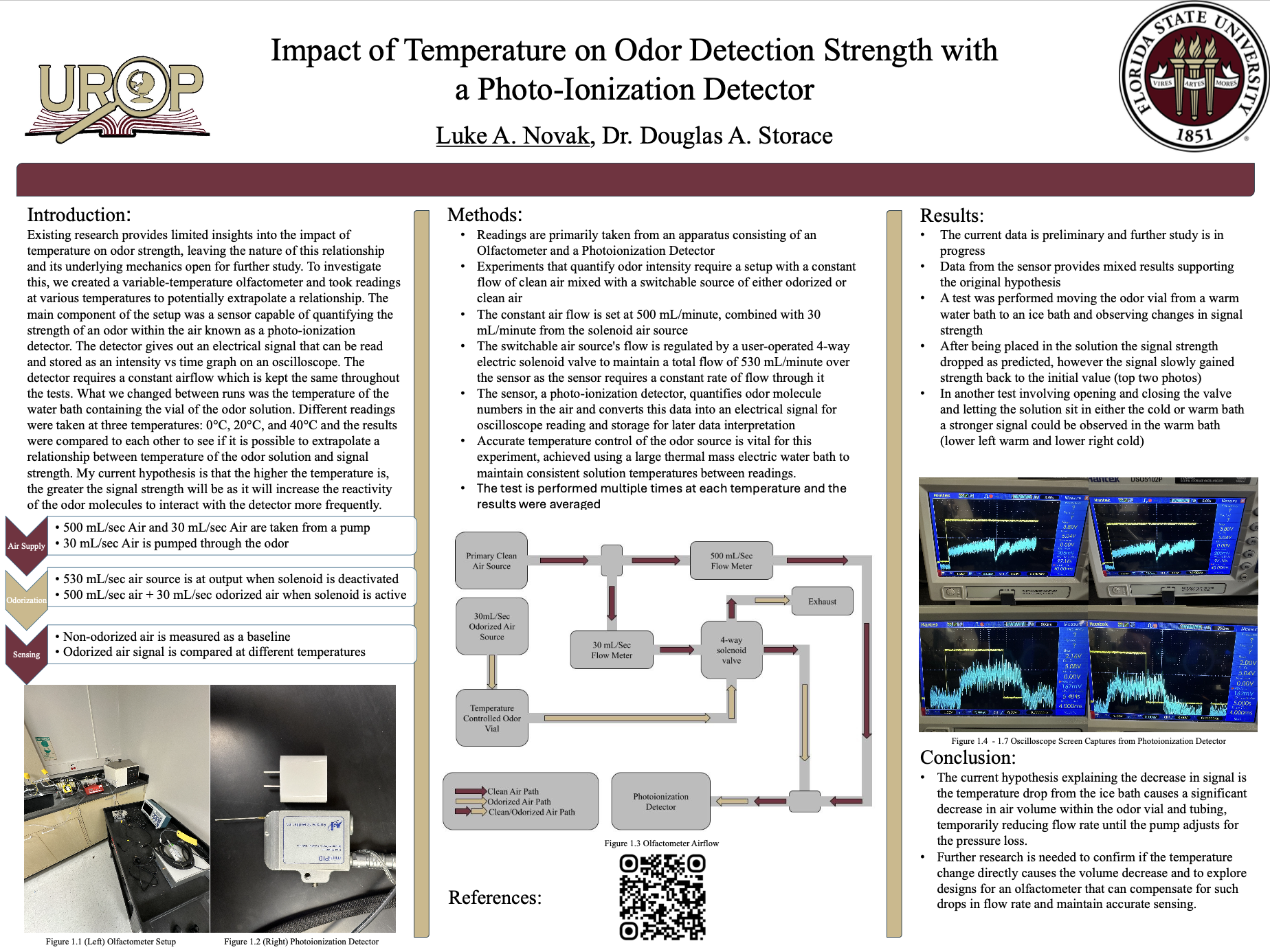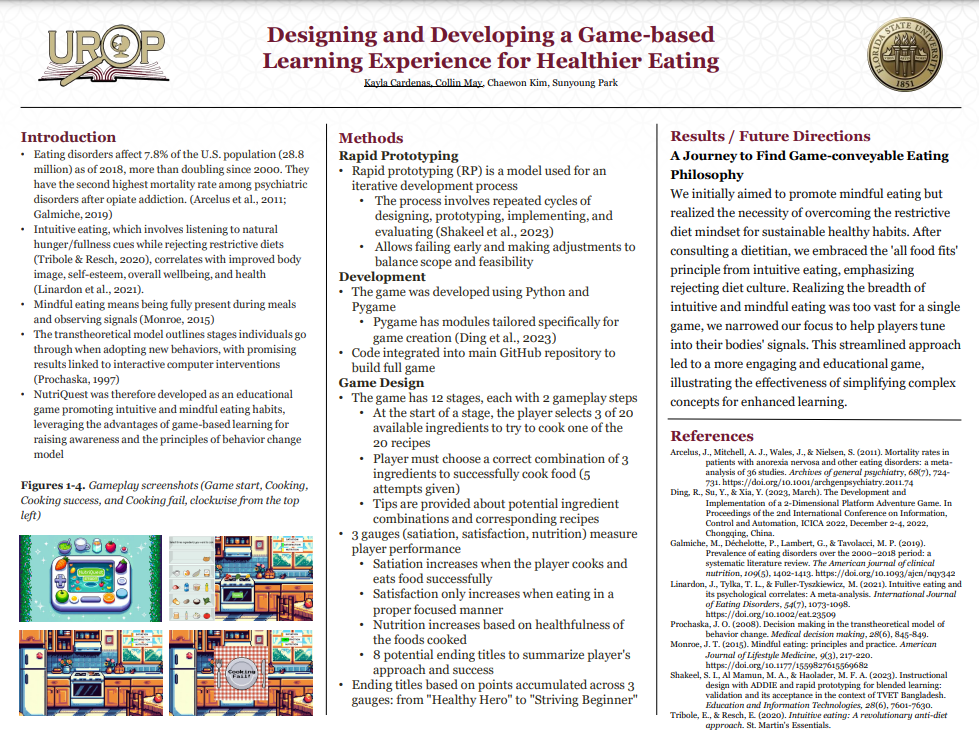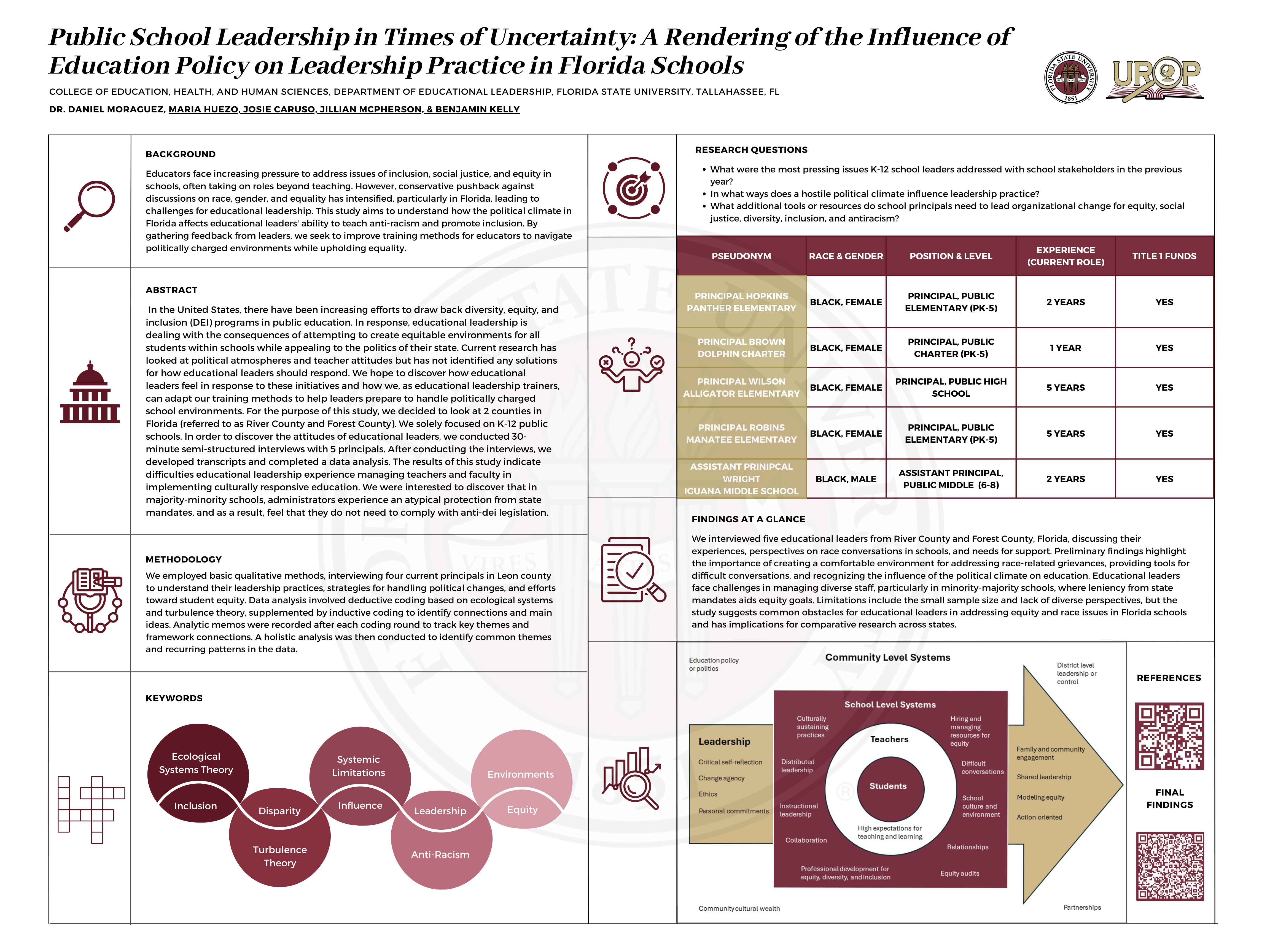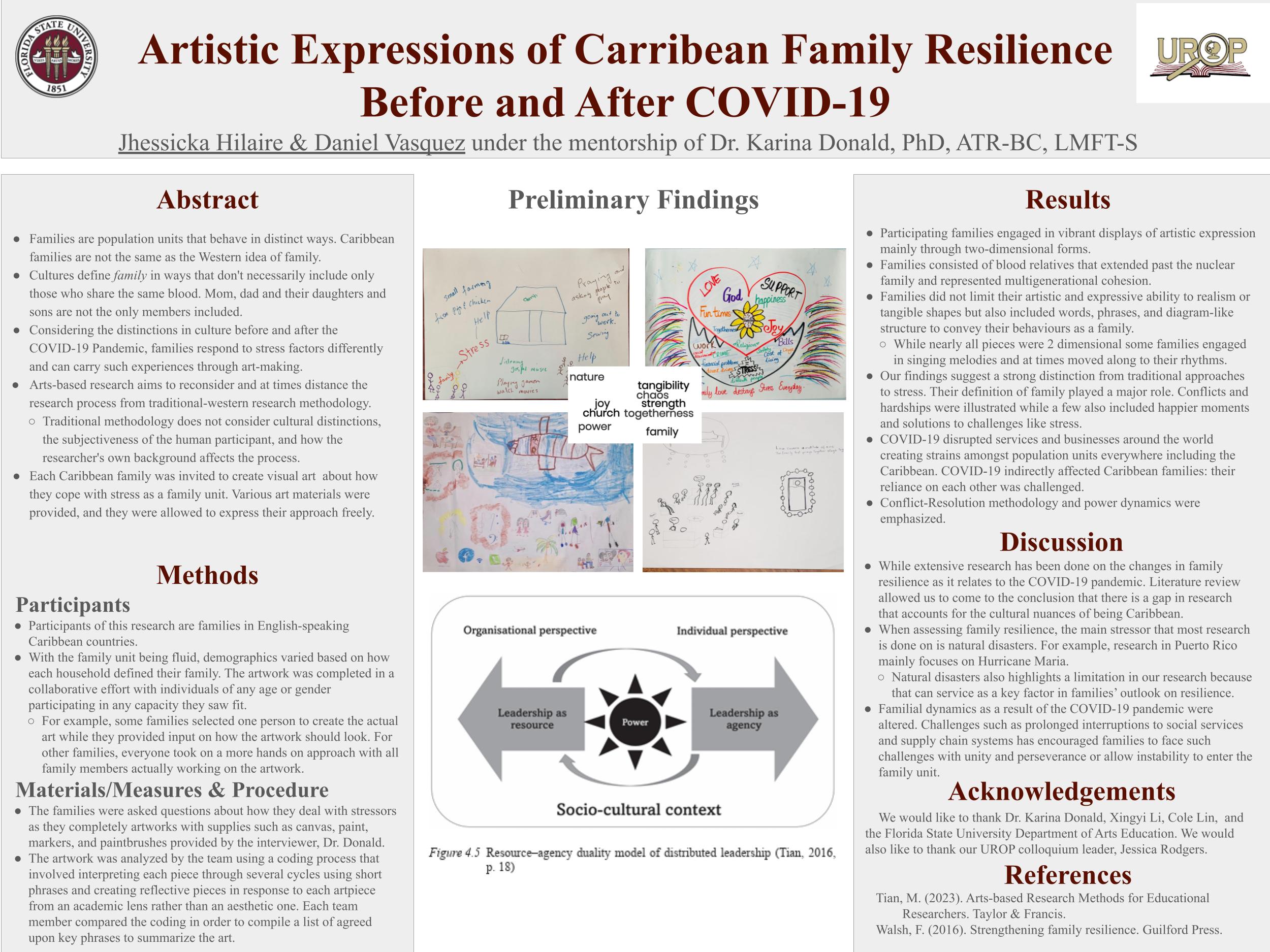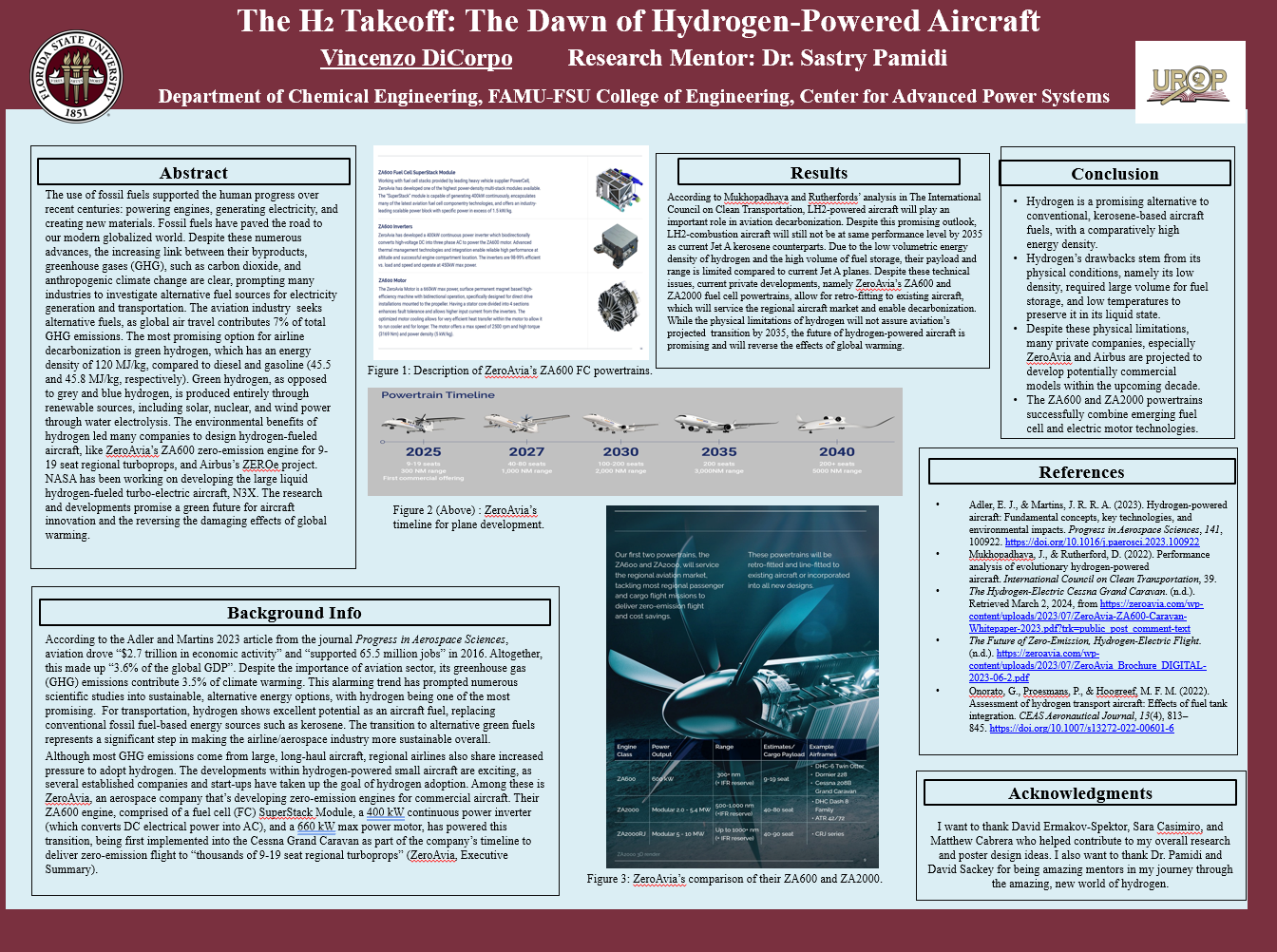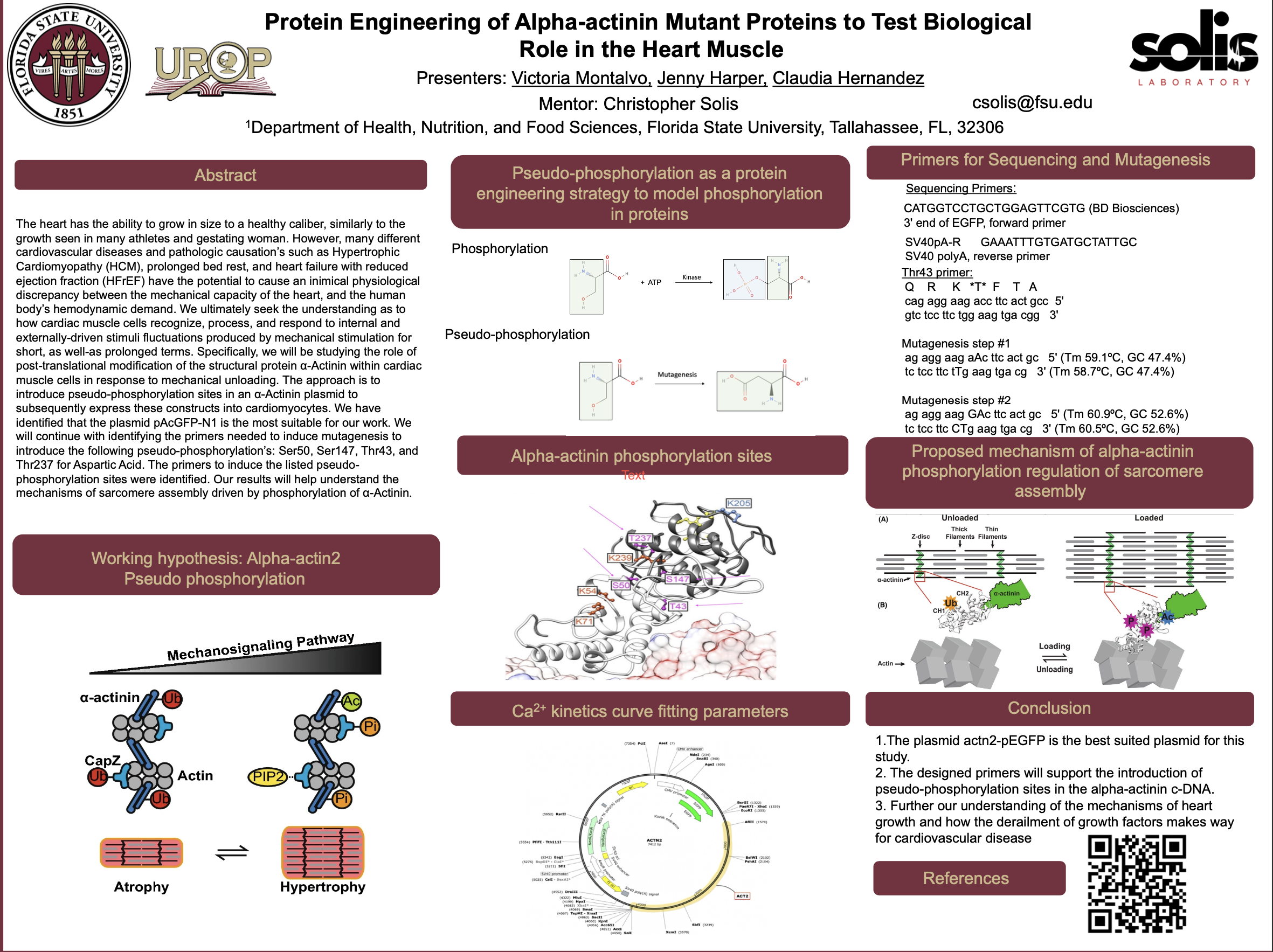Research Symposium
24th annual Undergraduate Research Symposium, April 3, 2024
Sara Boles Poster Session 5: 4:00 pm - 5:00 pm/95
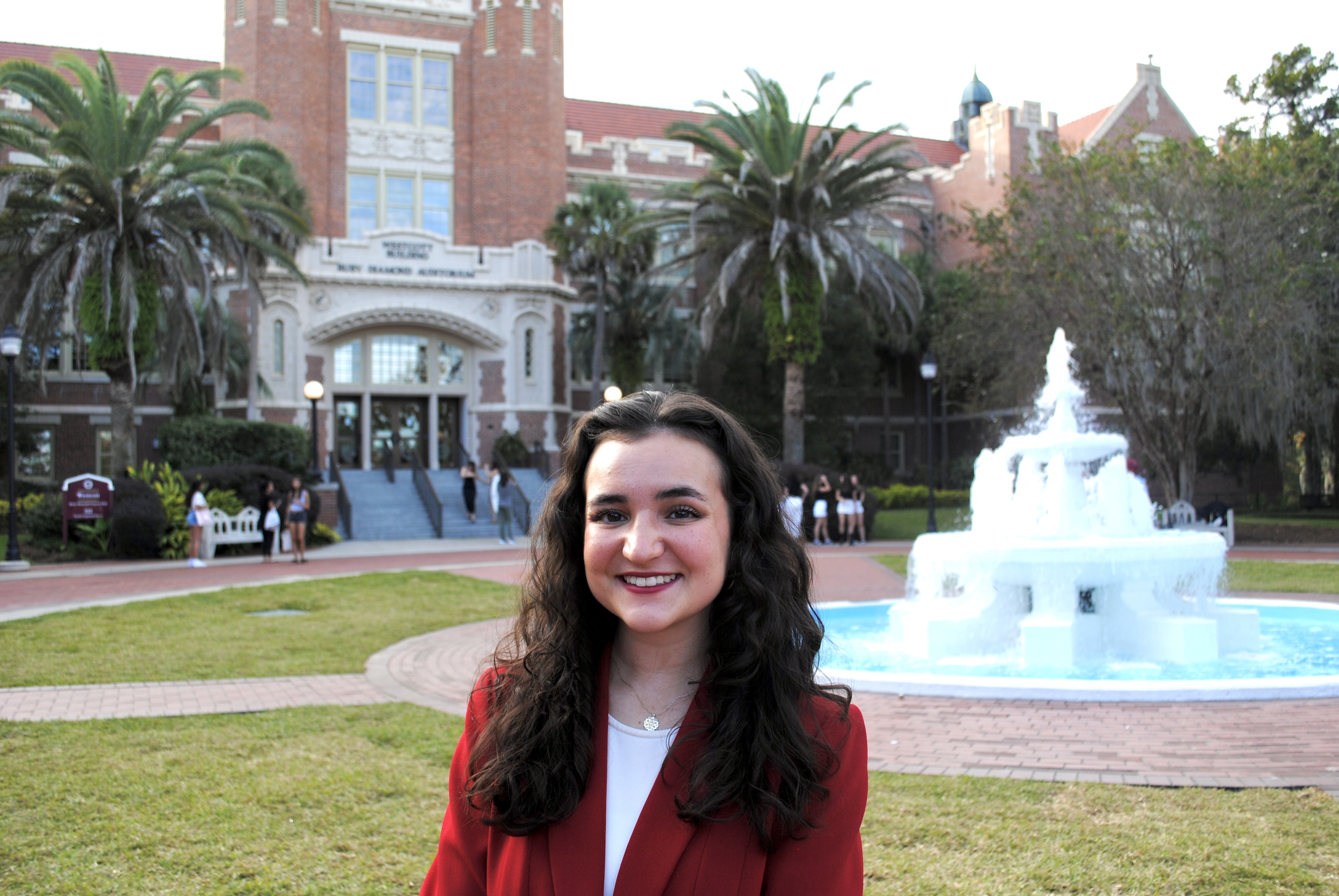
BIO
Sara is a Pre-Law Senior from Milton, FL, interested in Juvenile Justice and Human Rights. Sara is part of the University Honors Program, Honors Legal Scholars, and is the co-founder of the FSU Human Rights Cohort. Sara is currently interning in the Juvenile Division of the Leon County Public Defender's Office where she assists youth clients in delinquency proceedings. This semester, she will graduate Suma Cum Laude from Florida State University and will soon decide which law school she will attend in the Fall.
The Constitutionality of Florida's Direct File Policy: Transferring Children to the Adult Criminal Justice System via Prosecutorial Discretion
Authors: Sara Boles, Dr. Radha ModiStudent Major: Political Science
Mentor: Dr. Radha Modi
Mentor's Department: Interdisciplinary Social Sciences, Sociology, African American Studies Mentor's College: College of Social Sciences & Public Policy Co-Presenters:
Abstract
My research consists of an overview of the Juvenile Justice System in the United States and an analysis of Florida's Direct File policy, which grants state prosecutors sole discretion in transferring children to the adult criminal justice system. With no judicial oversight or requirements, Direct File permits the arbitrary treatment of juveniles as adults by allowing state attorneys to retain unmitigated power. Using Supreme Court precedents, neuroscience, and a comparison of other state's transfer statutes, I assess the constitutionality of charging children as adults, focusing on the Fifth, Eighth, and Fourteenth Amendments. Given the statute's lack of implementation criteria, I analyze the geographic and racial disparities regarding which children are subject to Direct File across Florida's 20 judicial circuits. Finally, I discuss policy alternatives, such as more stringent restrictions on when children can be transferred, the opportunity for reverse waivers, and a review of the transfer decision by independent judiciaries.
Keywords: direct file, children, justice system, juvenile, florida
24th annual Undergraduate Research Symposium, April 3, 2024
Bilal Taleb Poster Session 3: 1:30 pm - 2:30 pm/3
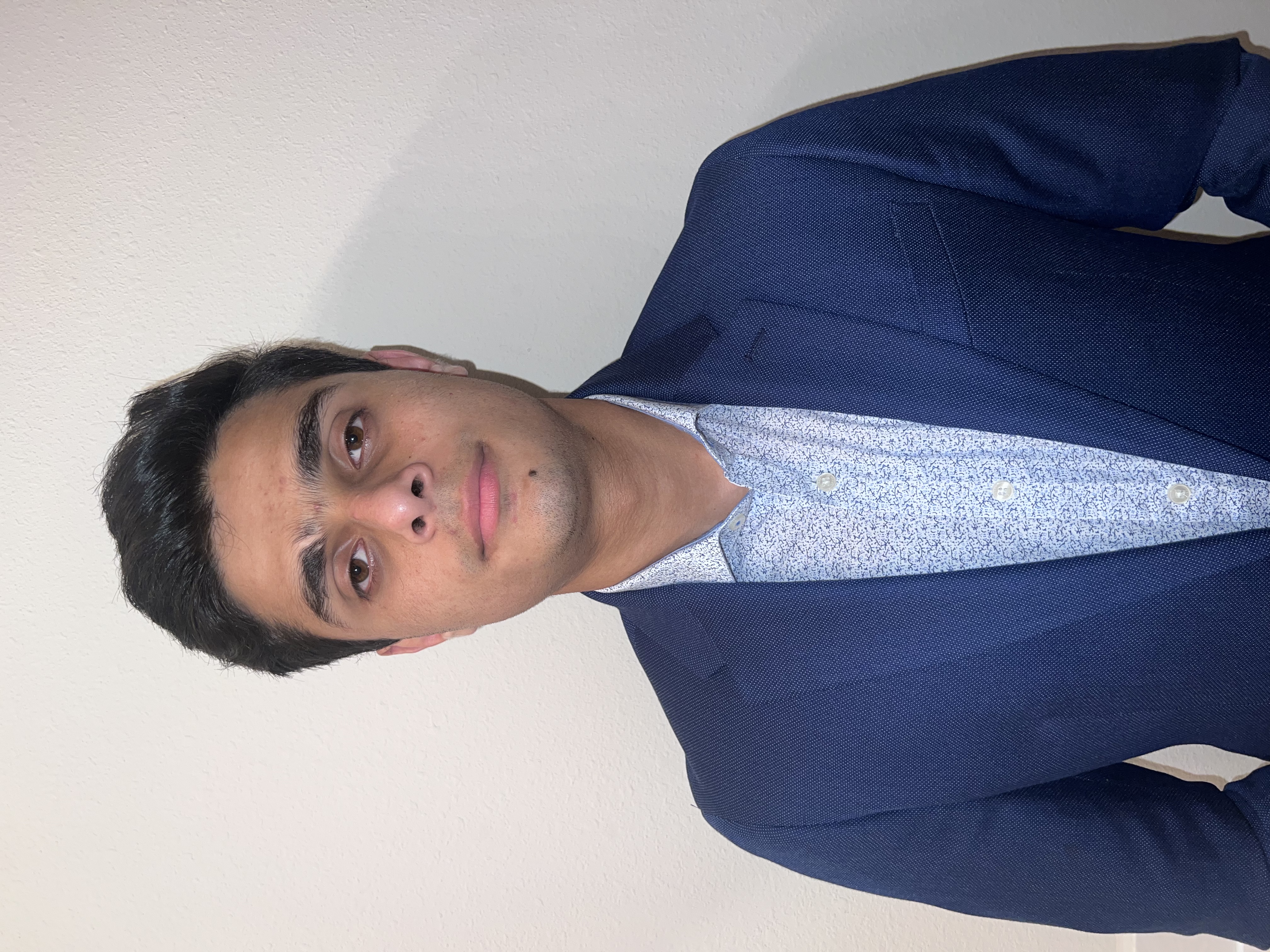
BIO
My name is Bilal Taleb, I am American Lebanese. I grew up in Lebanon and came to America to start my college life. I am a Junior majoring in Computer Science. The project I am part of is about communication between vehicles and everything (V2X) in order to improve safety on roads. This project narrowed my career interest to software engineering specified in Autonomous and electrical Vehicles.
Cultivating Safer and Smarter Roads: Resource Sharing for Enhanced Transportation in Autonomous and Semi-Autonomous Vehicular Networks
Authors: Bilal Taleb, Dr. Marcos VasconcelosStudent Major: Computer Science
Mentor: Dr. Marcos Vasconcelos
Mentor's Department: Electrical and Computer engineering Mentor's College: College of engineering Co-Presenters:
Abstract
A complex socio-technical system is created when autonomous driving and human operations coexist, posing technical safety issues and possible ethical and legal dilemmas. This project targets autonomous and semi-autonomous vehicles, while addressing the issues of safe and effective transportation by enabling resource sharing at the micro and macro cloud infrastructure levels. Representative in this project are scenarios where an autonomous vehicle faces an intersection dilemma with the presence of a human driven car, while simultaneously taking into consideration how the vehicle should proceed in residing actions.
Keywords: autonomous vehicles Technology Network V2X
24th annual Undergraduate Research Symposium, April 3, 2024
Ingalls Witte Poster Session 5: 4:00 pm - 5:00 pm/347

BIO
My name is Ingalls Witte, I am from Tampa, Florida, and am a freshman here at Florida State University majoring in Biological Sciences on the pre-med track. Aside from UROP, I am involved in the Chi Omega sorority on campus and am a Student Engagement Officer at the FSU Foundation. Outside of class and my involvements, I spend my free time making art, tending to my plant collection, playing the banjo, reading, and spending time with my loved ones. In the future, I hope to be in pediatrics with a focus on oncology in honor of my younger brother.
Microscopic BioArt
Authors: Ingalls Witte, Jamel AliStudent Major: Biological Sciences
Mentor: Jamel Ali
Mentor's Department: Chemical and Biomedical Engineering Mentor's College: College of Engineering Co-Presenters:
Abstract
In the contemporary art world, a new art movement has arisen. BioArt is a synthesis between the Biological Sciences and Visual Arts where individuals employ several scientific processes to illustrate the intersection between creativity and the natural world. For my research process, I employed various light microscopy techniques such as dark-field microscopy and phase-contrast microscopy to photograph artwork of various organisms and cell cultures. Additionally, by utilizing photo editing software such as Photoshop, I false-colored originally grayscale Scanning Electron Microscopy (SEM) images that were previously taken. The convergence of Biological Sciences and the Visual Arts helps encourage conceptual and introspective thinking surrounding scientific processes, emphasizing philosophical, societal, and environmental issues. Furthermore, BioArt plays an important role in stimulating scientific thinking, contributing to new technologies and research questions, and garnering excitement surrounding science as a whole.
Keywords: Microscopy, Biology, Visual Arts
24th annual Undergraduate Research Symposium, April 3, 2024
Jenna Valdemar Poster Session 4: 2:45 pm - 3:45 pm /400
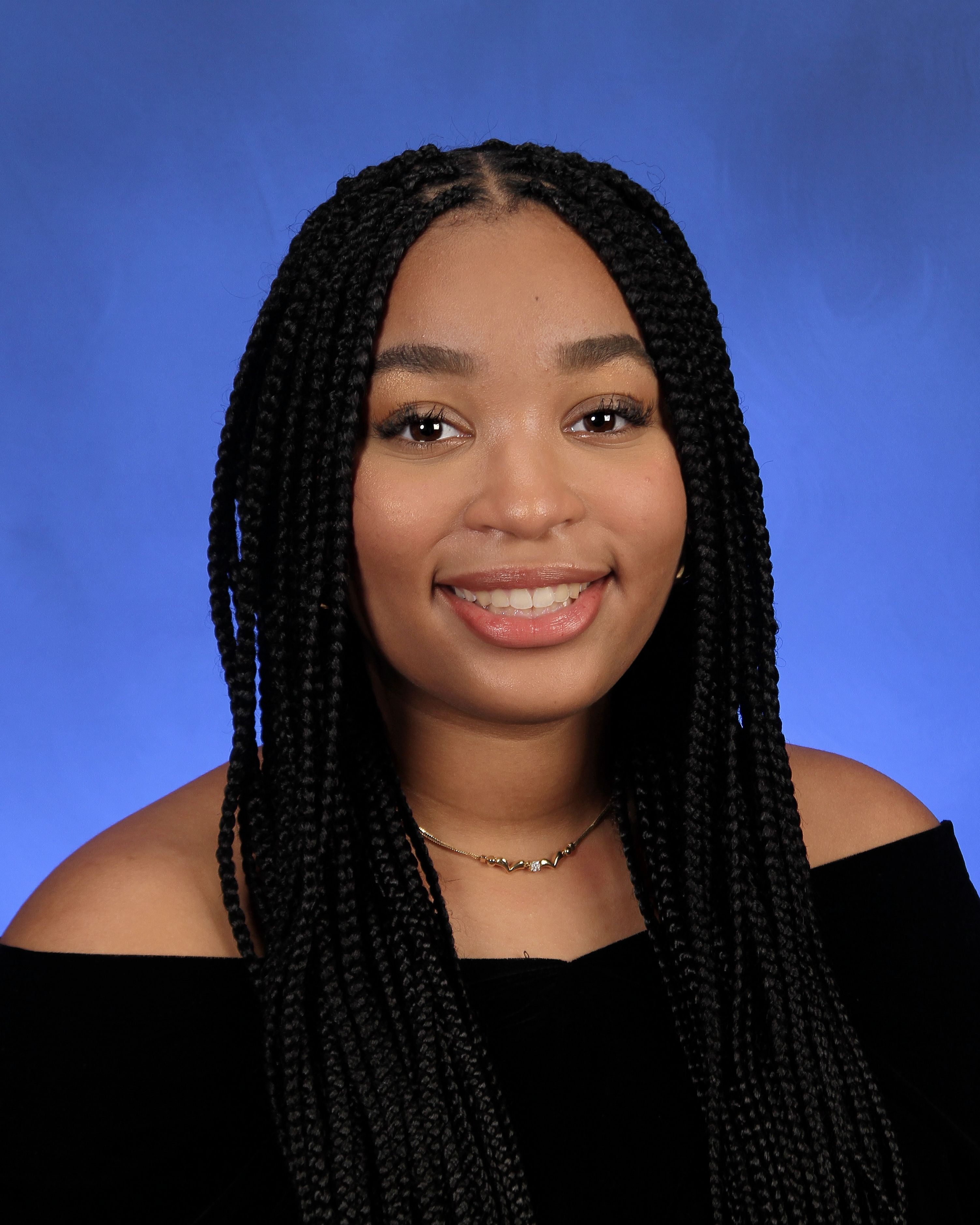
BIO
Jenna Valdemar is a first year College of Business student at the incomparable Florida State University. Her undergraduate degree will highlight her expertise in Human Resource Management and Marketing. After she graduates, she plans on working as an executive at a top fortune 500 company. She enjoys watching films in her free time and would love to work in the entertainment industry in the long term. Jenna is a young, tenacious, ambitious and incredibly creative student, who enjoys exploring new passions like music, video editing and more.
Alcohol and Mindfulness in African American College Students
Authors: Jenna Valdemar, Dr. Laura Reed MarksStudent Major: Human Resource Management, Marketing
Mentor: Dr. Laura Reed Marks
Mentor's Department: Department of Educational Psychology and Learning Systems Mentor's College: College of Education, Health, and Human Sciences Co-Presenters:
Abstract
Project TIME is a five-year research study aimed at creating a mobile health mindfulness application that hopefully reduces stress and alcohol use in Black college students. Therefore, the project's first-year aims are to gather data and information to understand the patterns and motivations behind alcohol consumption in this population. Through the data collection process, which includes surveys, researchers can find mechanisms to limit alcohol consumption. After analyzing two measures from the survey - alcohol use and the "The Five Facet Mindfulness Questionnaire," a significant relationship was found between the "Acting with Awareness" subscale on the "The Five Facet Mindfulness Questionnaire" measure and alcohol use. Hence, components of mindfulness may be helpful in reducing alcohol use in Black college students.
Keywords: Alcohol, African American, College Student, Drinking, Mindfulness, Survey
24th annual Undergraduate Research Symposium, April 3, 2024
Laura Gazioni Poster Session 4: 2:45 pm - 3:45 pm/240
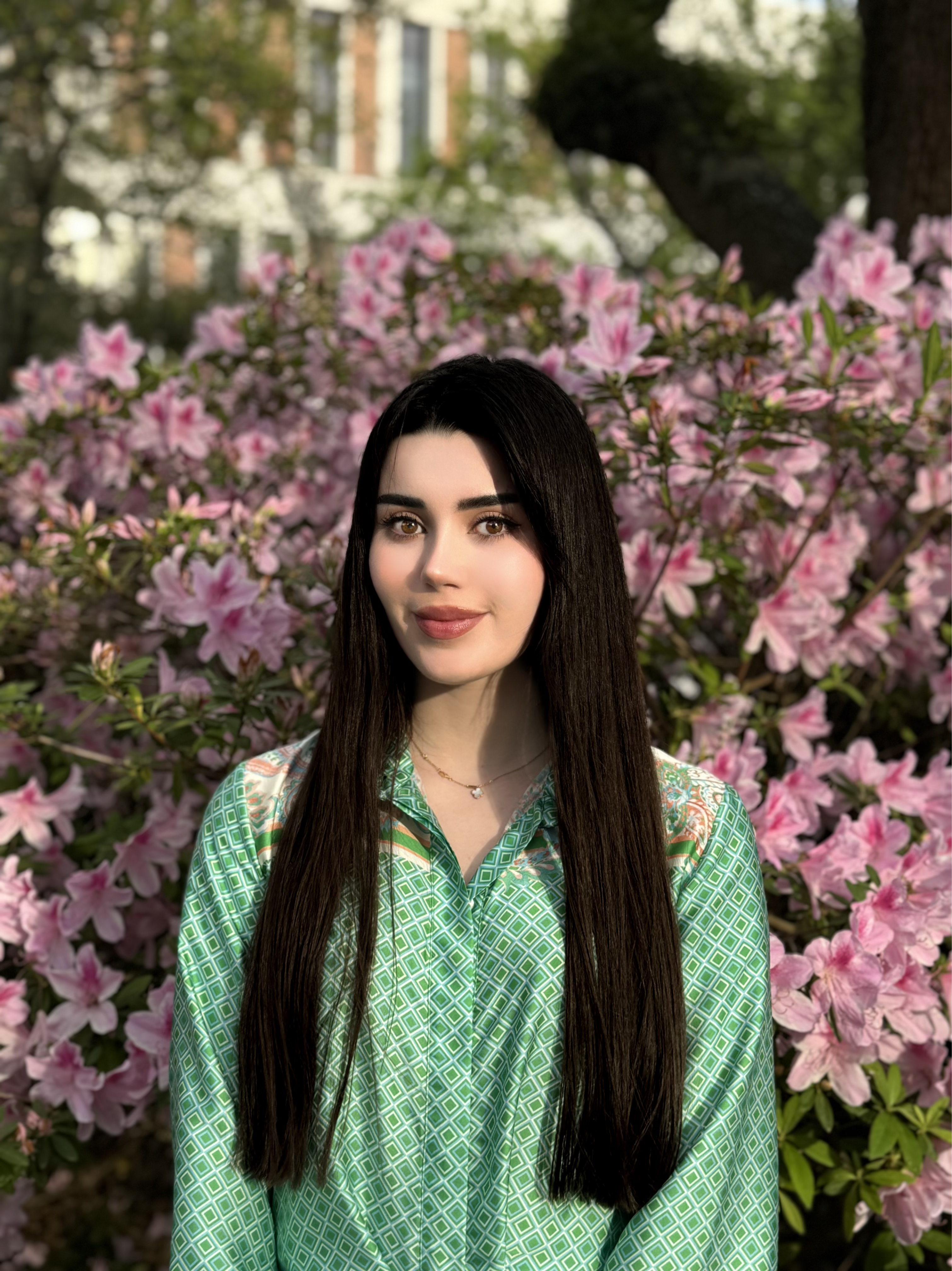
BIO
I am Laura Gazioni, an international student from Albania, majoring in Biological Sciences. With a clear vision of pursuing a career in medicine, I am actively involved in research endeavors within the medical domain. My dedication to research stems from a desire to not only expand my knowledge but also to explore approaches that can propel the field of medicine forward. Through opportunities like UROP, I aim to contribute to the advancement of medical understanding and, ultimately, improve patient care in the future as a physician. As I continue my academic journey, I am excited for every opportunity, knowing it holds the key to my growth!
Spatial Navigation as an Overlooked Cognitive Marker for Multiple Sclerosis? – a Meta-Aanalysis
Authors: Laura Gazioni, Dorota Kossowska-KuhnStudent Major: Biological Sciences
Mentor: Dorota Kossowska-Kuhn
Mentor's Department: Psychology Mentor's College: Florida State University Co-Presenters: Diya Patel
Abstract
Spatial Navigation as an Overlooked Cognitive Marker for Multiple Sclerosis?
Background: Multiple Sclerosis (MS) is a disease affecting the central nervous system, particularly the brain and spinal cord (O’Brien, 2008). This condition can significantly impact vision, mobility, and balance. Spatial navigation, defined as the process of using landmarks and cues to determine a route to an objective destination, is proposed as an early cognitive indicator of MS in the literature (Nema, 2021). Understanding the interplay between MS pathology and spatial cognition is crucial for enhancing our comprehension of the diverse manifestations of MS and may have implications for the development of targeted interventions to improve the quality of life for individuals with MS.
Methods: This project aims to investigate the relationship between MS and spatial navigation skills by synthesizing findings from previous studies on MS and spatial navigation through a meta-analysis.
Results: Out of 4271 articles in title and abstract screening phase, 81 were identified for full text review. This is an ongoing study.
Keywords: navigation, multiple sclerosis, medicine, biology, analysis
24th annual Undergraduate Research Symposium, April 3, 2024
Ziya Tian Poster Session 3: 1:30 pm - 2:30 pm /107
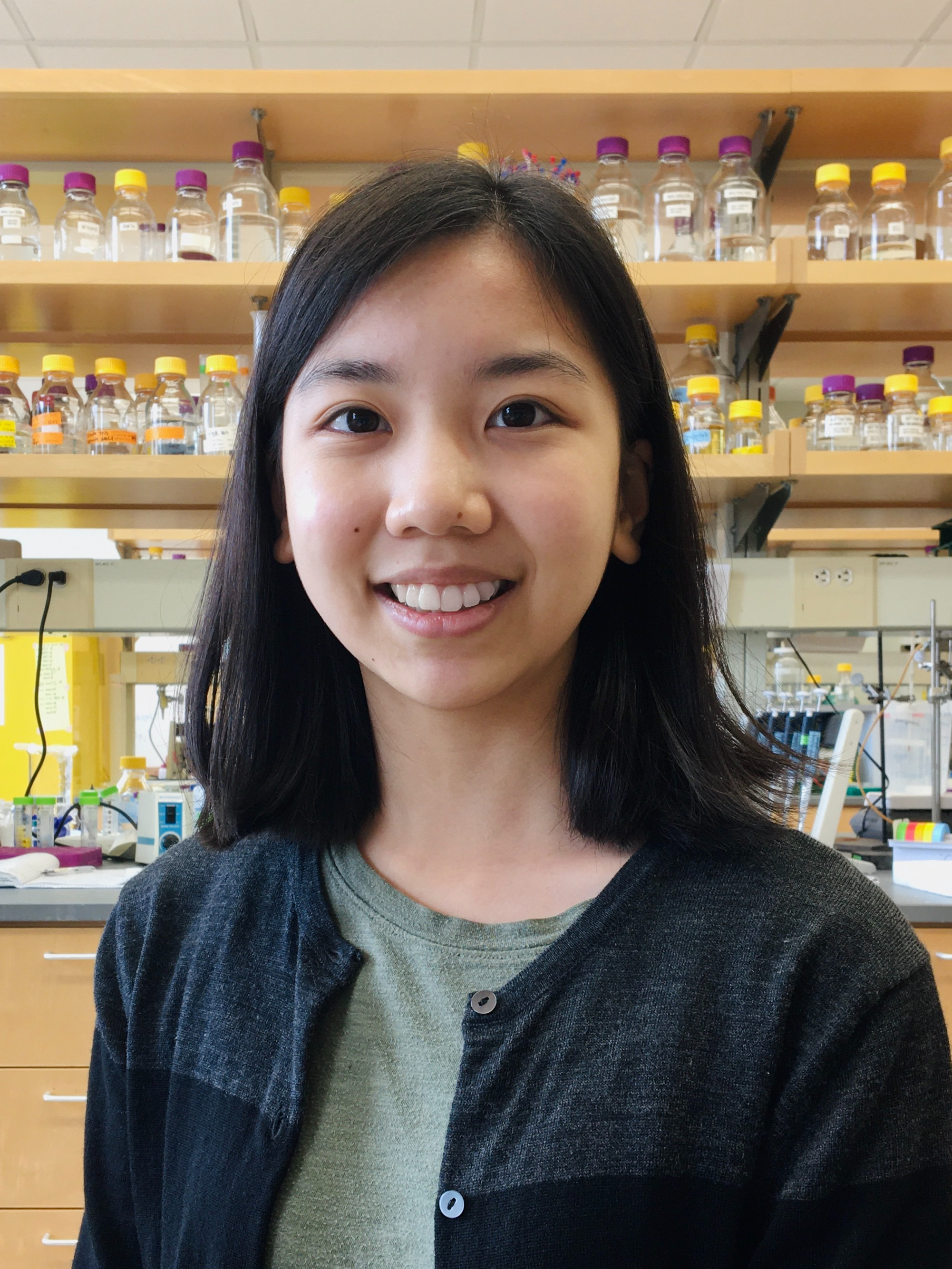
BIO
My name is Ziya Tian and I am a third-year student at Florida State University pursuing a dual degree in Biological Science and Computer Science. I grew up in Beijing, China, and moved to the U.S. six years ago. Currently, my research is focused on the structures and interactions of molecules in a biological system. After completing my undergraduate degree, I plan to pursue a Ph.D. to deepen my understanding of the mechanisms of life.
Investigating the Impact of FtsQ on FtsZ Filament Curvature in the Mycobacterium tuberculosis Divisome
Authors: Ziya Tian, Yan-Yan HuStudent Major: Biological Science and Computer Science
Mentor: Yan-Yan Hu
Mentor's Department: Department of Chemistry and Biochemistry Mentor's College: College of Arts and Sciences Co-Presenters:
Abstract
Mycobacterium tuberculosis is the causative agent of tuberculosis (TB), a disease that affects a quarter of the world population and caused 1.6 million deaths in 2021 alone. The rise in multi-drug and extensive drug-resistant TB cases underscores the urgent need for novel therapeutic strategies. Understanding the intricate cellular processes of M. tuberculosis division is critical for identifying potential drug targets. The cell division process is initiated by FtsZ, which forms the Z-ring at the division site through GTP-dependent polymerization and interacts with various other proteins, including FtsQ. Recent evidence suggests direct interactions between an amphipathic helix in the otherwise disordered N-terminal (NT) of FtsQ and the GTPase domain of FtsZ monomers, potentially influencing FtsZ polymerization. This study aims to characterize the effects of FtsQ NT on FtsZ polymers and determine the atomic structure of the QZ complex. We hypothesized that FtsQ NT induces curvature in FtsZ filaments due to clashes between FtsQ and FtsZ protomers in straight filaments. The GTPase domain of FtsZ (residues 1-312) and FtsQ NT (residues 1-99) were each separately expressed and purified, then combined at various molar ratios in in-vitro polymerization reactions. Using negative-stain transmission electron microscopy (TEM), we revealed that FtsQ NT altered the shape and curvature of FtsZ filaments at a 3:1 Q:Z molar ratio. Atomic-level structure determination with cryo-EM is currently in progress. These findings highlight the QZ interface as a prospective target for cell-division inhibitors, offering promising avenues for combatting TB.
Keywords: protein, biochemistry, bacteria, tuberculosis
24th annual Undergraduate Research Symposium, April 3, 2024
Hannah Maken Poster Session 5: 4:00 pm - 5:00 pm/216
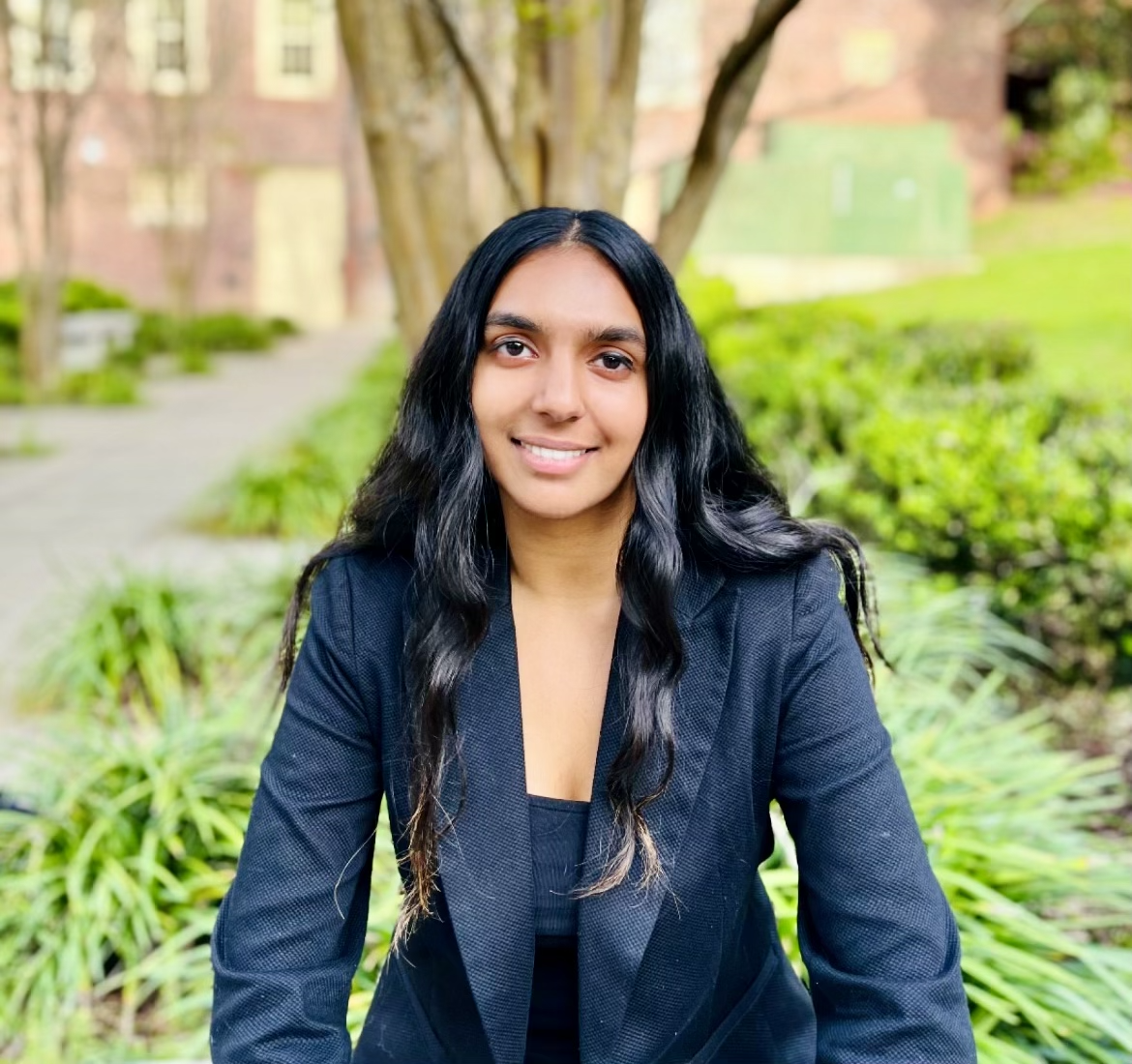
BIO
I am originally from West Palm Beach, Florida, and my current research interests include the utilizations of numerous different softwares, including MATLAB and Python, to analyze and identify components of images and gather data from them. I hope to gain additional research experience with these programs, as they will help prepare me to more thoroughly analyze data and learn machines in my future career.
Developing An AI-based Particle-tracking Algorithm For Cardiac Muscle Cell Growth and Contractility
Authors: Hannah Maken, Dr. Christopher SolisStudent Major: Chemical Engineering
Mentor: Dr. Christopher Solis
Mentor's Department: Department of Health and Human Sciences Mentor's College: College of Education, Health, and Human Sciences Co-Presenters: Matthew Hutchins, Rick Geneus
Abstract
Our goal is to evaluate images showing the assembly and disassembly processes, which will be important examples for constructing an algorithm to estimate sarcomere growth within cardiac muscle cells. Reaching this objective will make a substantial contribution to our knowledge of the dynamics of the heart muscle and may also yield new perspectives on exercise physiology and heart health. The study of sarcomere growth in real time may yield important insights into the heart's response to different stimuli, which could guide the creation of effective treatments for cardiovascular disorders. Furthermore, this approach might be used more broadly to investigate the cellular dynamics of other muscle tissues, which would promote tissue engineering and regenerative medicine. This multidisciplinary approach has the potential to spur innovation and advancement in the field of biomedical research and lead to groundbreaking discoveries. The expansion of each individual cardiac muscle cell propels the heart's growth in response to exercise. Sarcomere construction, the cytoskeletal framework seen in muscle cells, facilitates this expansion. Our team has the ability to stimulate cells to work harder in a lab setting, which causes the cells to spontaneously boost the creation of sarcomeres.
Keywords: MATLAB, cells, imaging, cardiac muscle
24th annual Undergraduate Research Symposium, April 3, 2024
Hakjae Oh Poster Session 1: 9:30 am - 10:30 am /55
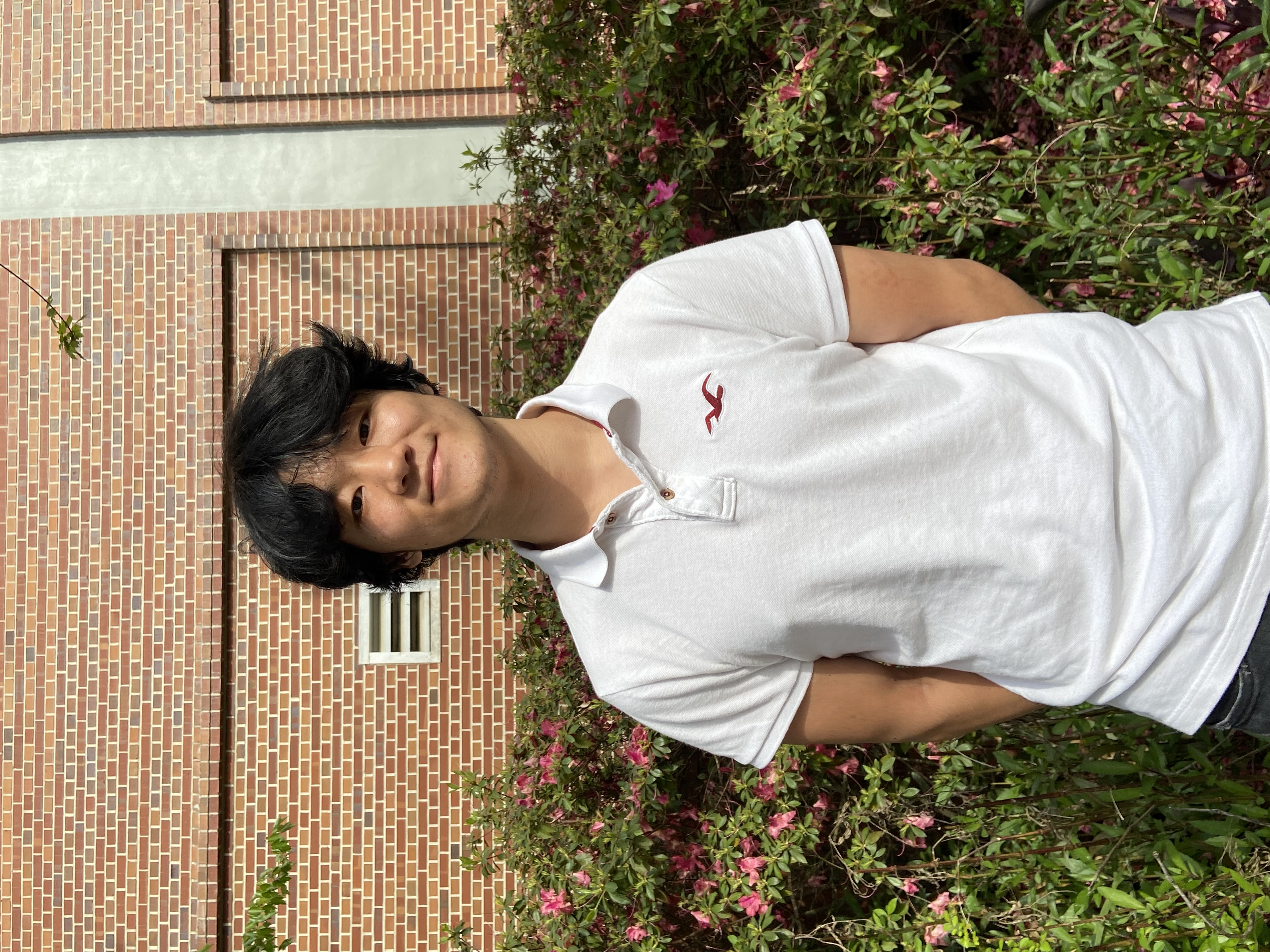
BIO
Hi! My name is Peter Oh and I am 2nd year philosophy major.
Representation in Female-Directed Bollywood Films
Authors: Hakjae Oh, Rebecca PetersStudent Major: Philosophy
Mentor: Rebecca Peters
Mentor's Department: Religion Mentor's College: College of Arts and Sciences Co-Presenters: Paige Rowland
Abstract
Cinema and other cultural artifacts inhabit a special place in a cultural landscape in that they both influence
and are influenced by the societies in which they originate. For this reason, our research project has focused
on the portrayal of women in Bollywood, the leading film industry of India, where women have traditionally
been characterized according to misogynistic interpretations of a woman’s role in society. However, there
has been a recent increase in female directors employed in the industry. This change has made Bollywood an
interesting case study. In this project, we gathered information through qualitative surveys that surrounded
the role of women in Bollywood films directed by women and released to wider audiences. Researchers
compiled this data through the survey database of Qualtrics to identify certain taboo behaviors, articles of
clothing, and other indicators exhibited by female characters. Although the study is still in its early phases,
this project highlights preliminary results from more than twenty films.
Keywords: Female representation, Bollywood
24th annual Undergraduate Research Symposium, April 3, 2024
Elise Dapper Poster Session 2: 10:45 am - 11:45 am/92
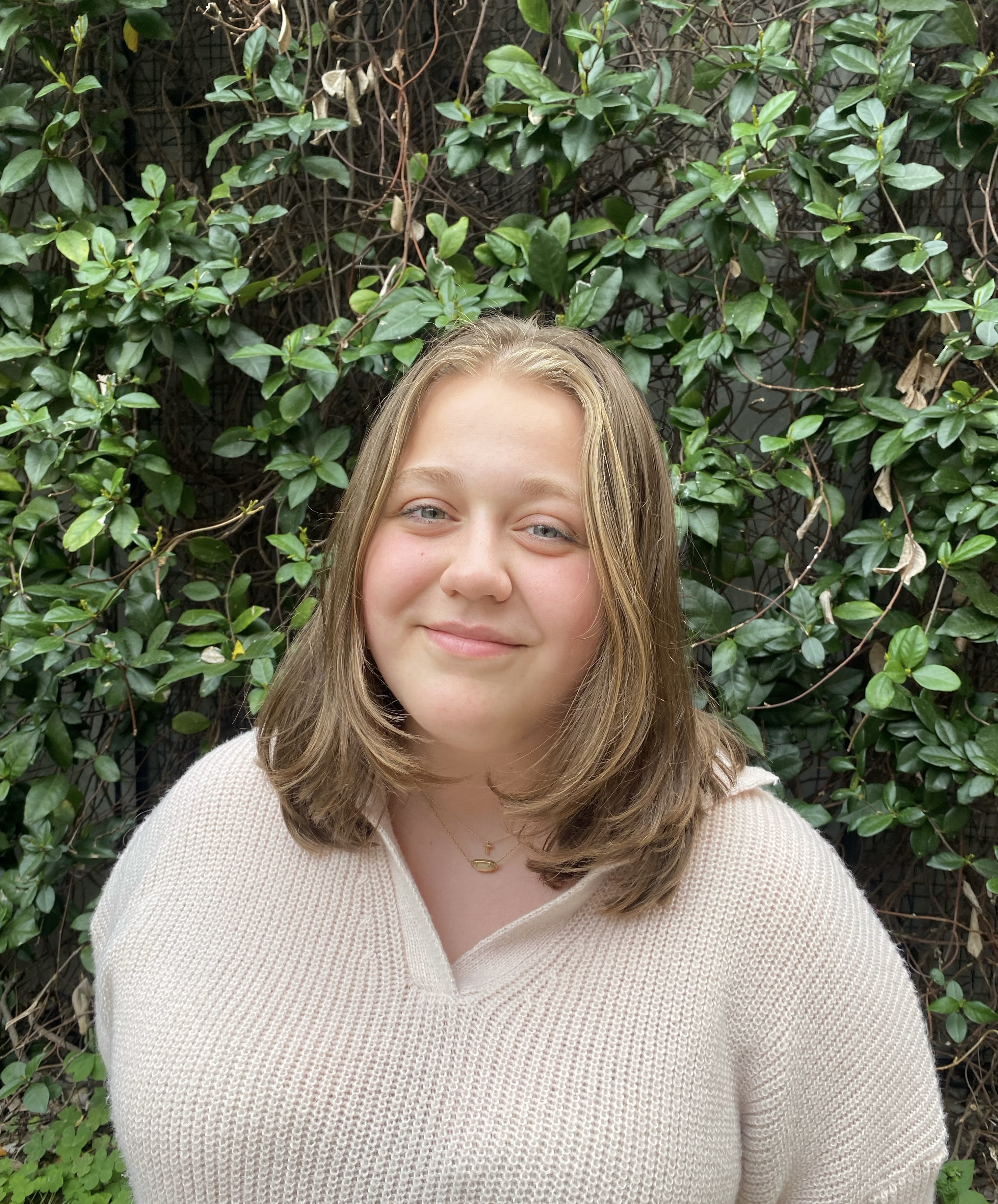
BIO
Hi! My name Elise Dapper and I am second year student from Bradenton, Florida and am majoring in Communication Science and Disorders and minoring in Education and Child Development. I plan to attend graduate school with the intention of becoming a speech-language pathologist. I hope to take part in research on developmental disabilities as well as further studying language development and different intervention methods and approaches. I am really passionate about my field of study and hope to make a change in the field whether that be through research or the work I do in the future.
Verb Ventures: Conquering Grammar Gaps in Spanish English MLs - A Comparative Study on Implicit and Explicit Intervention Approaches
Authors: Elise Dapper, Kiana HinesStudent Major: Communication Science and Disorders
Mentor: Kiana Hines
Mentor's Department: Communication Science and Disorders Mentor's College: Communication and Information Co-Presenters:
Abstract
The Verb Ventures project was built around the observation that many multilingual, Spanish and English students struggle to understand and apply the past and present verb tenses when learning the English language. This study specifically focuses on the use of explicit and
implicit methods during speech intervention with students in third through fifth grade. When attempting to teach participants how to use the different forms of each tense in order to figure out which method was most effective when teaching the verb tenses, multiple intervention sessions were conducted in which each method was used with a different verb
tense and practiced through different activities. The explicit method uses a shape coding chart that helps students to identify the subject and verb of the sentence, encouraging students to reframe their outlook and apply the correct verb tense without as much interventionist interaction. Comparatively, the implicit method requires more involvement by the interventionist, having them provide only two options and giving the students a forced choice between their own answer and the alternative
correct answer. It was predicted, and confirmed through the data tracked over time, that the explicit method proved to have the most impact on the language and speaking skills of the student participants. The research conducted will have a large impact on the field of education and speech therapy when finding ways to accommodate ML(multilingual) students in the classroom and in speech interventions, assisting in higher levels of
student success.
Keywords: Intervention, Multilingual, Verb, Implicit, Explicit
24th annual Undergraduate Research Symposium, April 3, 2024
Emma Clark Poster Session 1: 9:30 am - 10:30 am /139
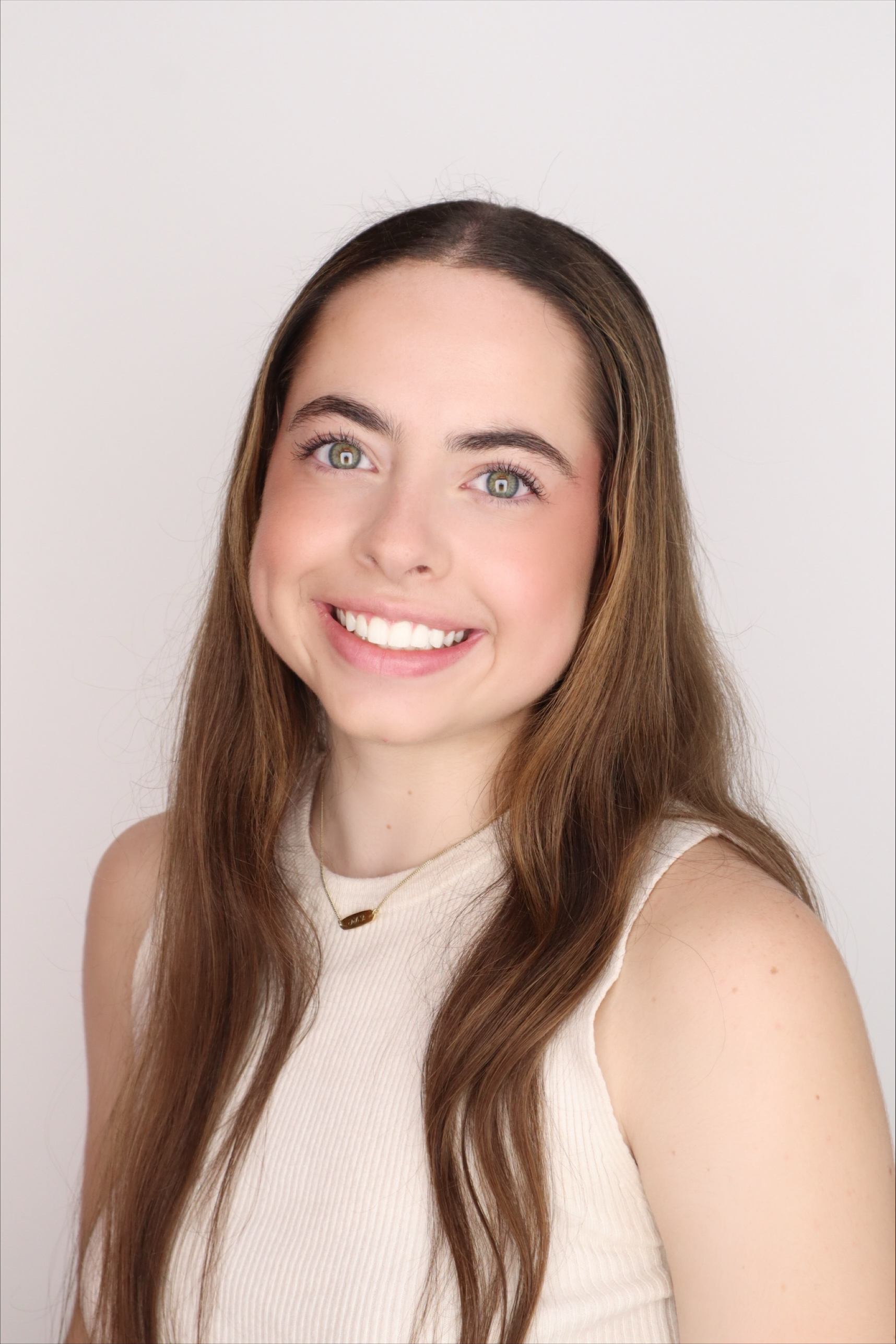
BIO
Emma is a freshman from St. Louis, Missouri, who is currently double majoring in Political Science & Philosophy. After completing UROP, Emma will continue working with Dr. Zanini-Cordi and the "Culture, Conversations, and Social Networks in 18th and 19th-century Italy" team to complete a pedagogical essay that has been accepted for publication in a special issue of Eighteenth-Century Studies. The team has also received an IDEA Grant to continue their investigation into various topics related to Social Network Theory, 18th century Enlightenment culture, and the lives and writings of various salonnieres. Their findings will culminate in the production of 16 additional episodes of Sip & Connect and a final presentation at the President's Showcase of Undergraduate Research Excellence in the fall.
Culture, Conversations, and Social Networks in 18th and 19th-century Italy: Women in Arms
Authors: Emma Clark, Irene Zanini-CordiStudent Major: Political Science/Philosophy
Mentor: Irene Zanini-Cordi
Mentor's Department: Modern Languages & Linguistics Mentor's College: College of Arts & Sciences Co-Presenters:
Abstract
The connotations of an 18th-century woman stand to be redefined by those women who worked with the system that inherently opposed them. 18th-century Italy brought about a plethora of women who chose to define new standards for female behavior and civility in using their own intellect to attempt to resurrect a dying republic. Two such women were Eleanora Fonseca Pimental and Giustina Renier Michiel. This research seeks to provide insight into the ways in which these women redefined freedom, justice, and equality for both Italian women and the Italian Republic in wake of unification while analyzing the role that philosophy of political obligation played in their resistance. Key sources include Pimental's newspaper, Monitore Napoletano, Michiel’s Origins of Venetian festivities, and several close secondary sources that build a picture of the political, economic, literary, and social advancements these women made. My research consists of cross analysis of these writings to identify how political theory can be used to describe their accomplishments. In order to understand the nature of the changing definition of a woman in 18th-century Europe, it is important to study the women who made themselves prevalent in mainstream and sophisticated society, as they set the standard for female behavior and the relationship between a woman and the society she lives in. This research pays homage to two such women.
Keywords: History, Italy, women
24th annual Undergraduate Research Symposium, April 3, 2024
Brenna Dolan Poster Session 3: 1:30 pm - 2:30 pm /63
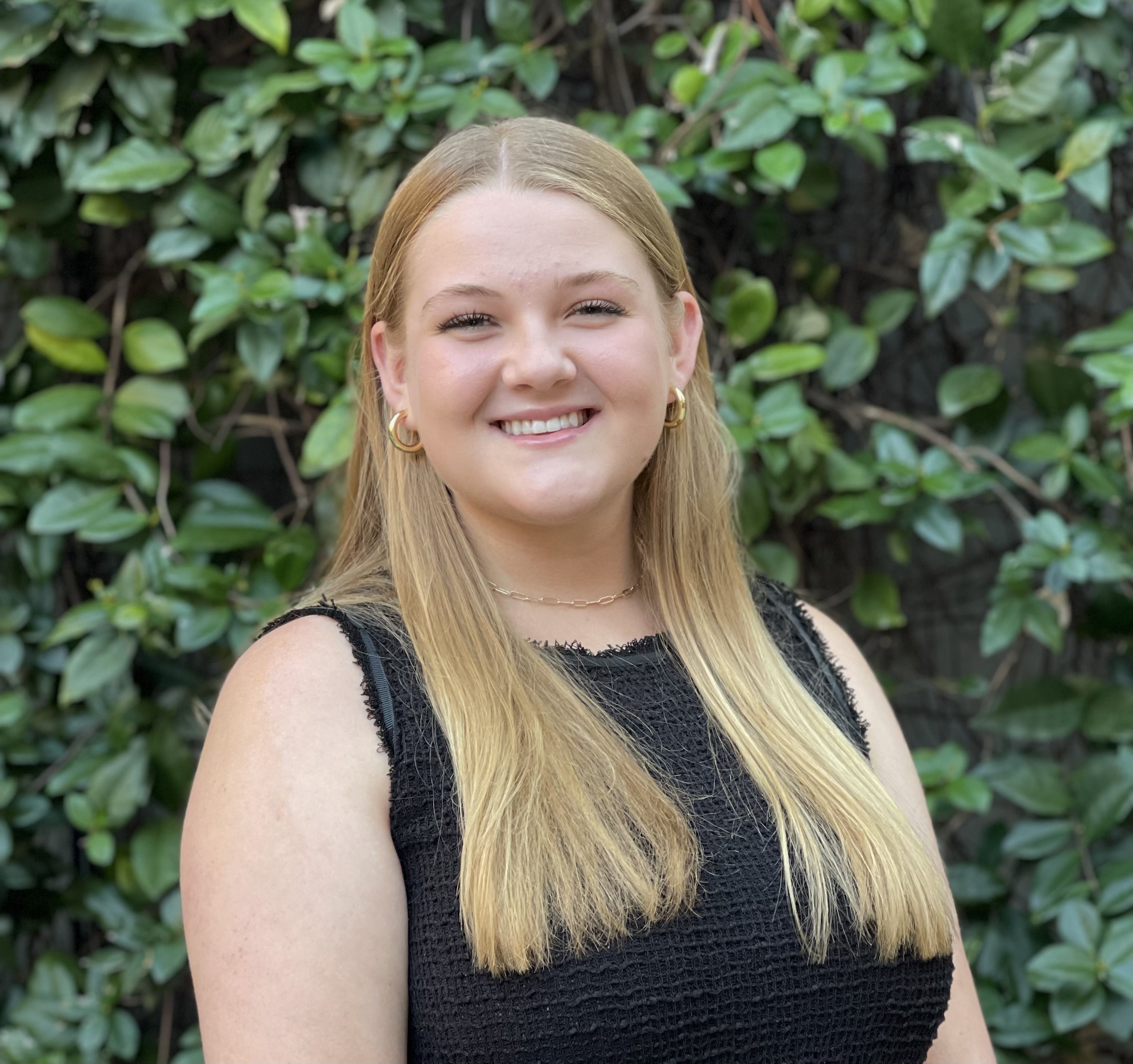
BIO
Hi, my name is Brenna Dolan, and I am currently a sophomore here at Florida State University. I am studying biology and I am on the premed track, with aspirations of going to medical school and eventually specializing in Dermatology. While at Florida State, I have been involved in a few Intermural sports, the residential conduct board, the environmental service club, I work as an RA for the school, and I am also involved in research.
I work in the Thoms’ microbiology lab, where I am presently researching the toxin Syringomycin’s effect on wall type and mutated plants. We are essentially inducing, purifying, and then running plant-dependent immune assays to find a common gene in mutated plants that allow them to be unaffected by the toxin. This will contribute to our lab’s ultimate goal – which is to establish and support the notion that there is a previously unknown type of immunity – toxin triggered immunity. We are currently in the purifying phase, and we are making great strides in our experiments.
Identifying Novel Genetic Pathways for Toxin-Triggered Immune Recognition
Authors: Brenna Dolan, David ThomsStudent Major: Biological Sciences
Mentor: David Thoms
Mentor's Department: Biological Science Mentor's College: Florida State University Co-Presenters: Sumetha Chu
Abstract
Syringomycin E is a lipopeptide produced by bacterial plant pathogen Pseudomonas syringae. - and causes plants to die when introduced to the toxin. We are interested in examining how Syringomycin can support/exemplify the notion of Toxin-Triggered immunity, which is a multi-step process. Our results showed that swapping out the most expensive nitrogen source (Histidine) with another organic source of nitrogen (Yeast extract) proved to be the cheapest and most efficient for inducing our toxin. The next steps are to purify our toxin and then run plant-dependent immune assays to find the genes within mutated plants that are responsible for preventing host (plant) death from the Syringomycin - ultimately supporting the idea of toxin- triggered immunity. Understanding the intricacies of plant innate immunity is not only crucial for unraveling the mysteries of plant-pathogen interactions but also holds significant implications for agricultural practices, biotechnology, and ecological balance.
Keywords: Immunity, toxin, plants, toxin-triggered immunity, syringomycin
24th annual Undergraduate Research Symposium, April 3, 2024
Luke Novak Poster Session 3: 1:30 pm - 2:30 pm /315
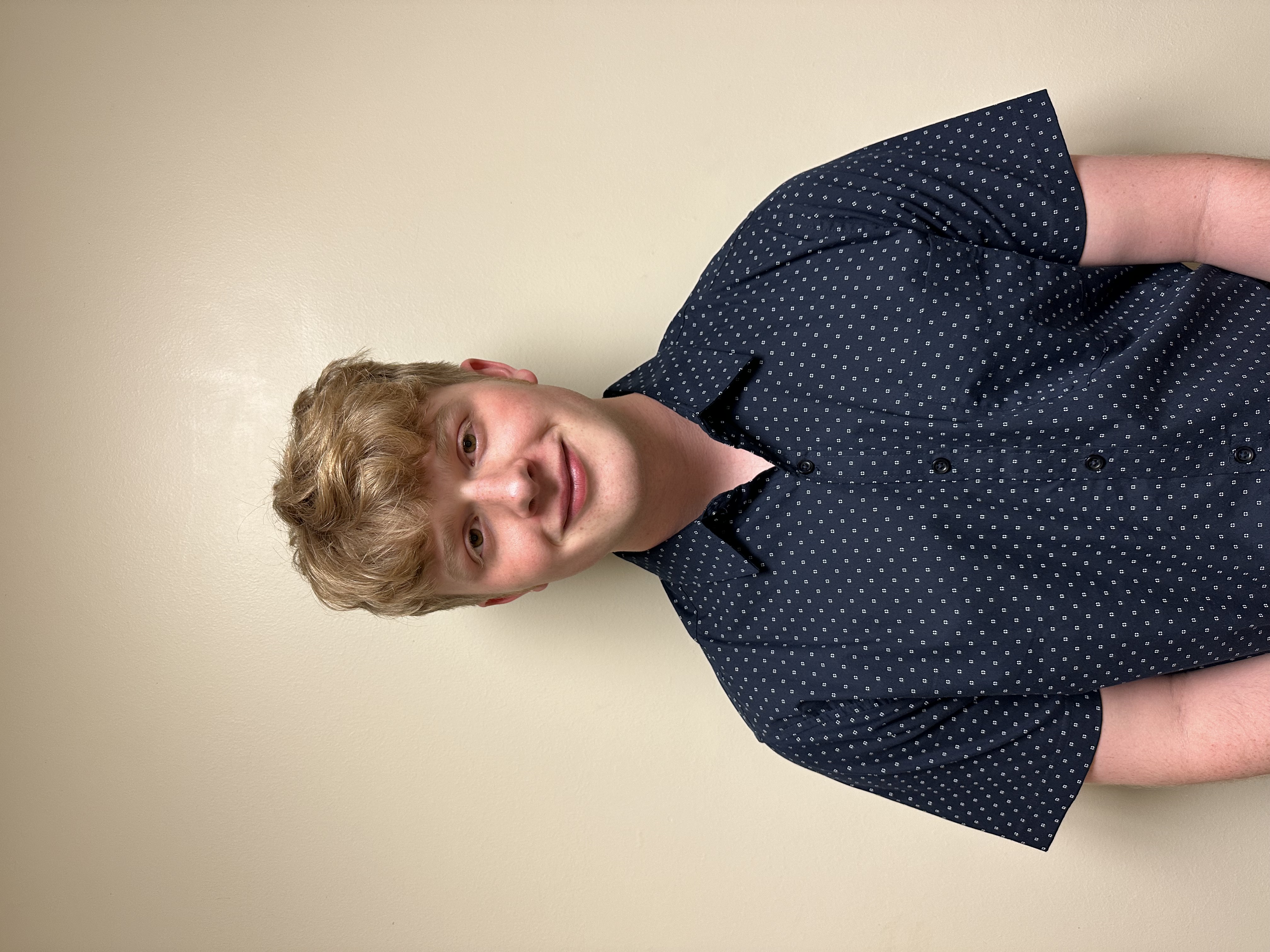
BIO
Hello, my name is Luke Novak and I am a freshmen in an IMS: Clinical Professions Major intending to go to medical school. I am originally from Albany, New York and I do not miss the snowy winters I used to have at home. I have really enjoyed working on this project as it has taught me the fundamentals of designing a scientific setup and the process of obtaining and interpreting usable data from the setup. In the future I look forward to delving deeper into the data processing side of neuroscience working on other projects.
Impact of Temperature on Odor Detection Strength with a Photo-Ionization Detector
Authors: Luke Novak, Dr. Douglas StoraceStudent Major: IMS: Clinical Professions
Mentor: Dr. Douglas Storace
Mentor's Department: Department of Biology Mentor's College: Biological Science Co-Presenters: N/A
Abstract
Existing research provides limited insights into the impact of temperature on odor strength, leaving the nature of this relationship and its underlying mechanics open for further study. To investigate this, we created a variable-temperature olfactometer and took readings at various temperatures to potentially extrapolate a relationship. The main component of the setup was a sensor capable of quantifying the strength of an odor within the air known as a photo-ionization detector. The detector gives out an electrical signal that can be read and stored as an intensity vs time graph on an oscilloscope. The detector requires a constant airflow which is kept the same throughout the tests. What we changed between runs was the temperature of the water bath containing the vial of the odor solution. Different readings were taken at three temperatures: 0°C, 20°C, and 40°C and the results were compared to each other to see if it is possible to extrapolate a relationship between temperature of the odor solution and signal strength. My current hypothesis is that the higher the temperature is, the greater the signal strength will be as it will increase the reactivity of the odor molecules to interact with the detector more frequently.
Keywords: Neuroscience, Olfactory System, Photoionization, Olfactometer
24th annual Undergraduate Research Symposium, April 3, 2024
Chisara Amanze Poster Session 2: 10:45 am - 11:45 am/152
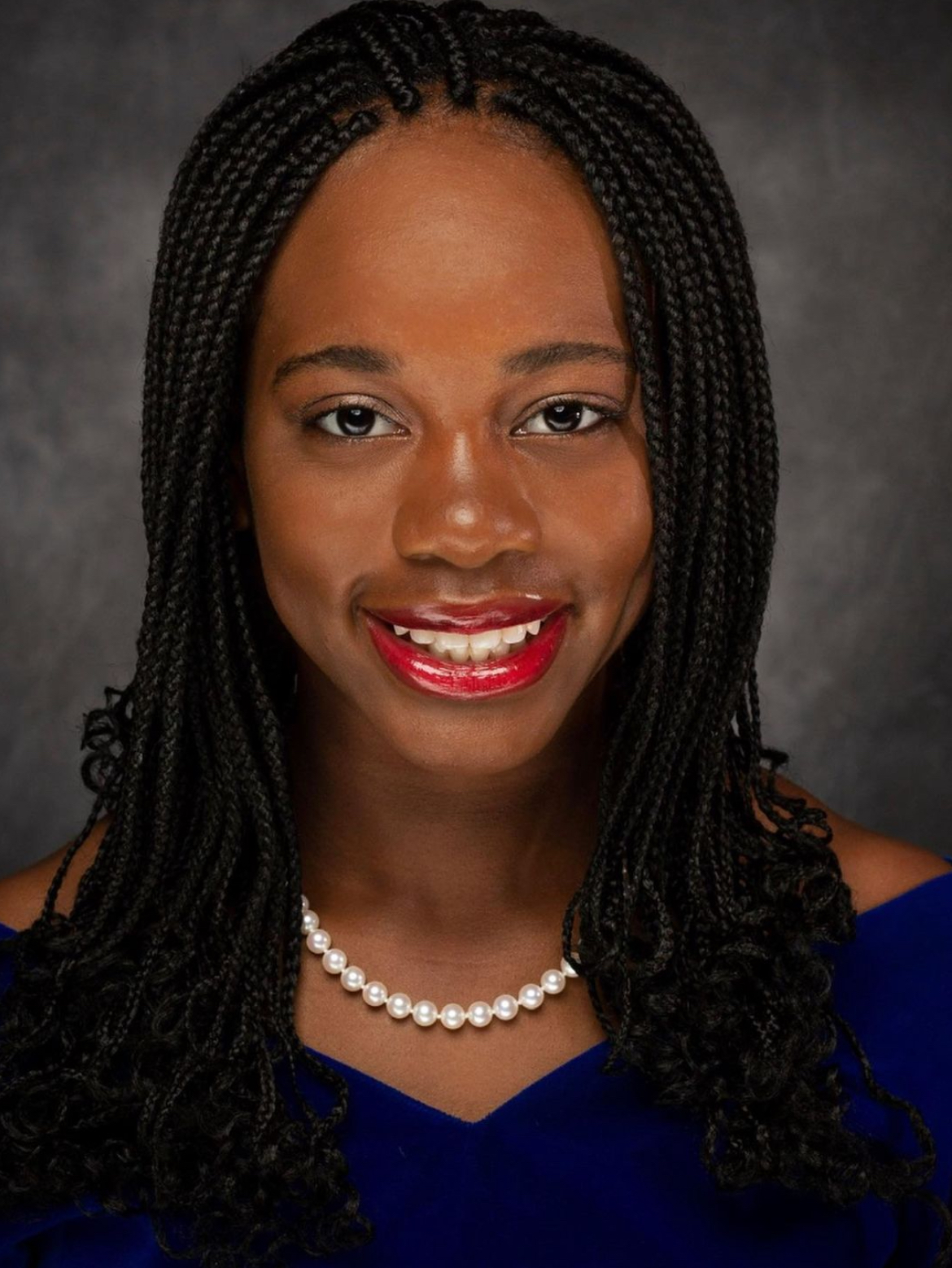
BIO
Chisara Amanze is a Freshman in the Florida State University's College of Motion Picture Arts. She has an interest in cinematic exposure in areas of African and African diasporic sociology, activism, culture, and art. She hopes that this research project will give her inspiration, experience, and exposure to topics and characters that she would like to focus her future documentary and biographical films on.
The Black Artist’s Way
Authors: Chisara Amanze , Dametria SelmoreStudent Major: Motion Pictures Art, Production
Mentor: Dametria Selmore
Mentor's Department: FSU College of Theater Mentor's College: Florida State University Co-Presenters: Rolner Benjamin
Abstract
The point of this research is to specifically display African American women that have enhanced their lives and the world around them through artistic expression. The women currently included in this project are Toni Morrison, Billie Holiday, and Dorothy Dandridge. Through our study of their pasts, we develop a cinematic project to help high school students view these women in a new light: one that properly emphasizes their greatness but also their humanity.
Keywords: Black Women in Fine Artis
24th annual Undergraduate Research Symposium, April 3, 2024
Aribah Rana Poster Session 3: 1:30 pm - 2:30 pm /144
BIO
My name is Aribah Rana and I am in my second year here at Florida State University. I am majoring in IMS Clinical Professions. Currently, I am involved in Phi Delta Epsilon International Medical Fraternity which is dedicated to shaping future decisions and Undergraduate Research Opportunities Program as a research assistant. Additionally, I am a Patient Care Technician at HCA Florida Capitol and a Physician Scribe at Tallahassee Memorial HealthCare. After obtaining my Bachelors degree from Florida State, I hope to medical school and specialize in OB/GYN. I am so grateful to have been given the opportunity to conduct research through UROP.
Morphological Analysis Pathway to Reading in Multilingual Learners
Authors: Aribah Rana, Dr. Carla WoodStudent Major: IMS Clinical Professions
Mentor: Dr. Carla Wood
Mentor's Department: Communication Disorders Mentor's College: College of Communication and Information Co-Presenters: Kara Adamczyk, Alexis Wilson, Sarah Quinlivan
Abstract
Many educators struggle to keep up with the unique needs of the growing population of English learners who are simultaneously attaining academic skills and language proficiency through elementary education. Thus, it is vital that educators build a child’s morphological awareness at a young age, breaking the otherwise gap in their literacy proficiency. Morphological awareness can be defined as the understanding of how we comprehend the ability for all words to be dissected into smaller units like roots and prefixes. While many different approaches can be taken to improve reading comprehension, in both English and Spanish speaking children, the Morphological Analysis Pathway to Reading (MAP-R) seems to be an effective method for remedying the aforementioned knowledge and academic vocabulary. Following a five- year period funded by the U.S. Department of Education using a technology-based approach in delivering literacy instruction for multilingual elementary aged students with or at risk of learning disabilities, we hope to improve the Florida curriculum and delivery of instruction.
Keywords: Morphological Analysis Pathway to Reading
24th annual Undergraduate Research Symposium, April 3, 2024
Kayla Cardenas Poster Session 3: 1:30 pm - 2:30 pm /66
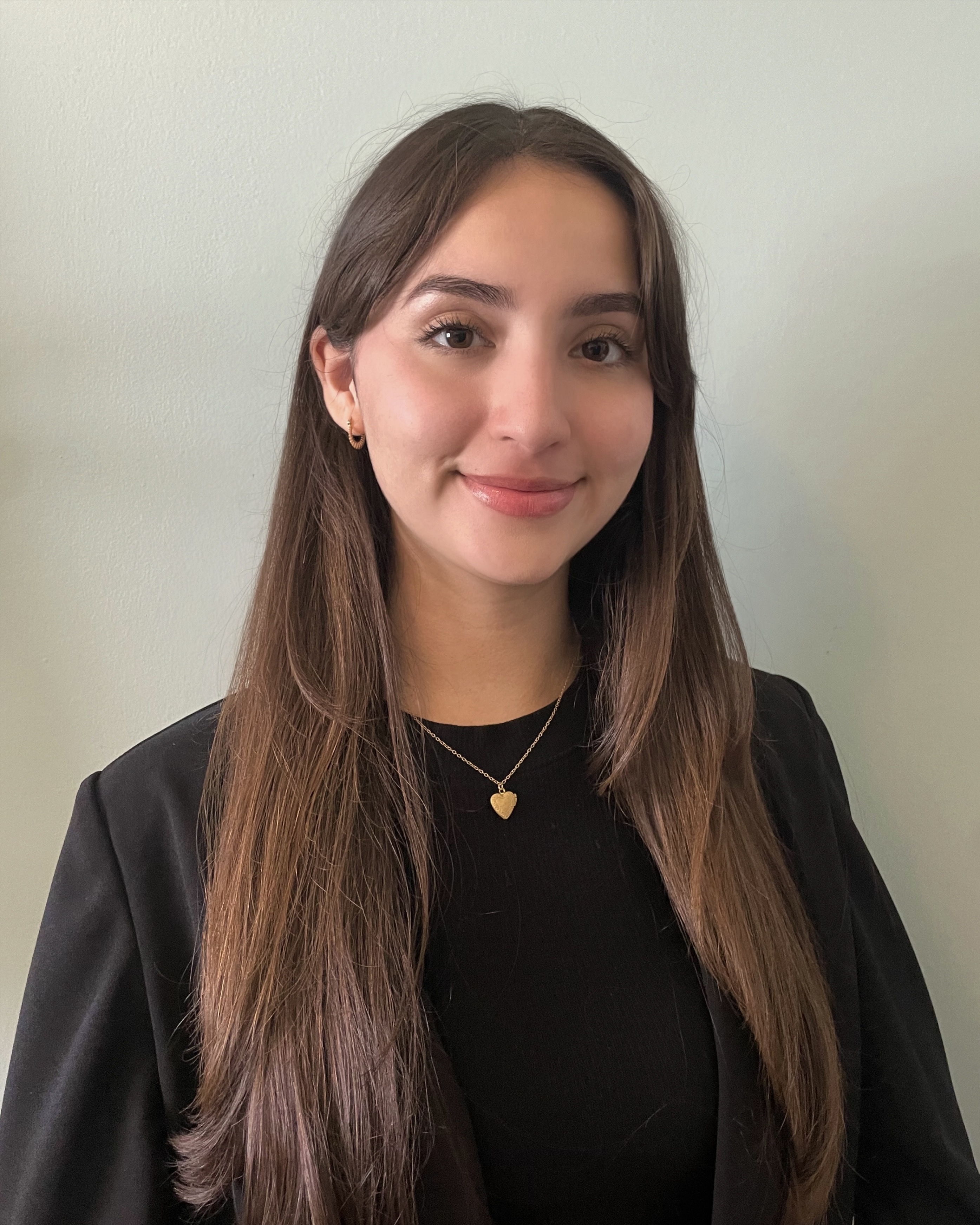
BIO
Kayla Cardenas is a senior from Miami attending Florida State University's College of Communication & Information. She is pursuing a degree in Media Communication Studies (BS) with a minor in Information Technology. In her time at FSU she has worked with various FSU organizations such as International Programs, University Libraries, and Information Technology Services. She is experienced in digital marketing, UI/UX design, and project management, with research interests in game-based learning and artificial intelligence. Upon completion of her undergraduate studies, she intends to apply to graduate school to further her knowledge in the media and technology fields.
Designing and Developing a Game-based Learning Experience for Healthier Eating
Authors: Kayla Cardenas, Chaewon KimStudent Major: Media Communication Studies
Mentor: Chaewon Kim
Mentor's Department: Educational Psychology and Learning Systems Mentor's College: College of Education Co-Presenters: Collin May
Abstract
Educating individuals on healthy eating habits is important in order to negate the development of eating disorders and correct unhealthy eating habits. Game-based learning has been proven to be instrumental in demonstrating certain scenarios where players can explore in a safe environment. This is valuable to teaching healthy eating habits that can then be practiced in real life, as teaching in a game-based environment allows room for error and improvement in eating practices. Making players aware of how to practice intuitive and mindful eating through game-based learning will encourage a preference for healthier meals based on decisions made about attitude. This game simulation includes gauges for satiation, satisfaction, and nutrition, which are all measures that can be used to determine healthy or unhealthy eating in real life. Players will balance and maintain these gauges through trial and error in navigating how to make healthy food recipes. If the player ends up making unhealthy food, the game will provide multiple-choice questions on how to make certain recipes healthier. A balanced and attentive approach to food consumption can be attained by cultivating an awareness of emotional triggers for eating. The ultimate goal of this educational game is to provide an alternative approach to educating individuals about healthy eating practices through game-based learning, emphasizing self-awareness and rejecting restrictive diets in favor of a more customized and holistic approach to well-being.
Keywords: video game, healthy eating
24th annual Undergraduate Research Symposium, April 3, 2024
Jillian McPherson Poster Session 3: 1:30 pm - 2:30 pm /408
BIO
My name is Jillian McPherson and I am a sophomore at FSU studying Political Science and Human Rights with a minor in Religion. I am from Orlando, Florida and my passions consist of civil rights advocacy, political policy-making, and legal research. Through my undergraduate studies I strive to prepare for my career goals of being a civil rights attorney and state-level politician.
Public School Leadership in Times of Uncertainty: A Rendering of the Influence of Education Policy on Leadership Practice in Florida Schools
Authors: Jillian McPherson, Dr. Daniel MoraguezStudent Major: Political Science and Human Rights & Social Justice
Mentor: Dr. Daniel Moraguez
Mentor's Department: Department of Educational Leadership Mentor's College: College of Education, Health, and Human Sciences Co-Presenters: Josie Caruso, Benjamin Kelly, & Maria Huezo
Abstract
In the United States, there have been increasing efforts to draw back Diversity, Equity,
and Inclusion (DEI) programs in public education. In response, educational leadership is
dealing with the consequences of attempting to create equitable environments for all
students within schools while appealing to the politics of their state. Current research has
looked at political atmospheres and teacher attitudes but has not identified any solutions
for how educational leaders should respond. We hope to discover how educational leaders
feel in response to these initiatives and how we, as educational leadership trainers, can
adapt our training methods to help leaders prepare to handle politically charged school
environments. For the purpose of this study, we decided to look at 2 counties in Florida
(referred to as River County and Forest County).We solely focused on K-12 public
schools. In order to discover the attitudes of educational leaders, we conducted 30-minute
semi-structured interviews with 4 principals. After conducting the interviews, we
developed transcripts and completed a data analysis. The results of this study indicate
difficulties educational leadership experience managing teachers and faculty in
implementing culturally responsive education. We were interested to discover that in
majority-minority schools, administrators experience an atypical protection from state
mandates, and as a result, feel that they do not need to comply with anti-DEI legislation.
Keywords: Social justice, Anti-racism, Equity, Inclusion, Diversity, Ecological systems theory, Turbulence theory, Systemic limitations
24th annual Undergraduate Research Symposium, April 3, 2024
Jhessicka Hilaire Poster Session 5: 4:00 pm - 5:00 pm/221
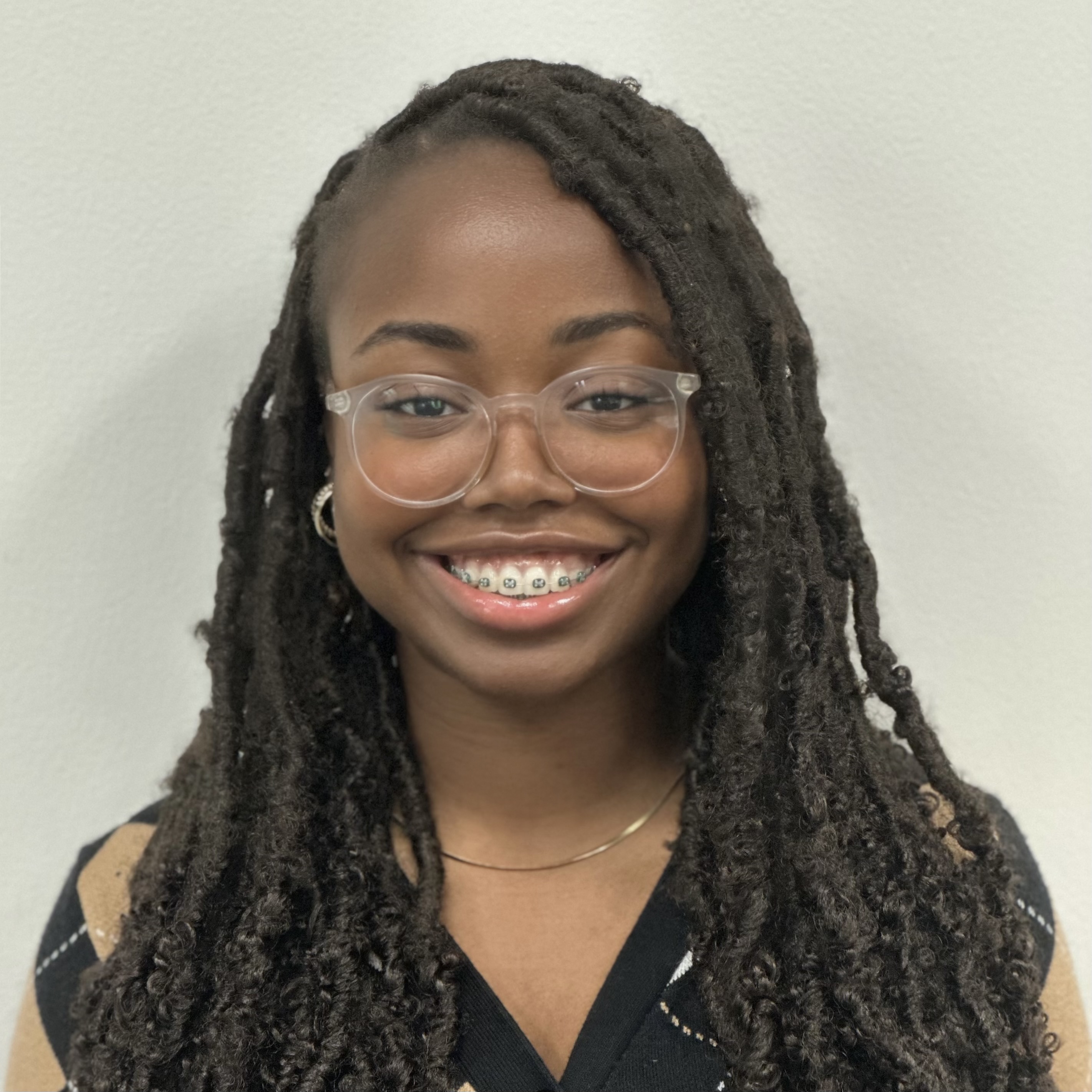
BIO
I am a second-year junior, double majoring in Human Development and Family Sciences and in Psychology. After graduating with my Bachelor of Science degree, I plan to attend graduate school to pursue a career in clinical psychology with an emphasis on the treatment of mental disorders onset by childhood trauma. I am Caribbean myself, so this research project allowed me to explore cultural nuances that are often overlooked.
My involvements on campus include serving as a community service chair for the National Council of Negro Women (NCNW) and a membership chair for the Caribbean Students' Association (CSA); I am also a 2024 Orientation Leader.
Artistic Expressions of Carribean Family Resilience Before and After COVID-19
Authors: Jhessicka Hilaire, Dr. Karina DonaldStudent Major: Human Development and Family Sciences & Psychology
Mentor: Dr. Karina Donald
Mentor's Department: Department of Arts Education Mentor's College: College of Fine Arts Co-Presenters: Daniel Vasquez
Abstract
Families are population units that behave in distinct ways. Caribbean families are not the same as the Western idea of family. Cultures define family in ways that don't necessarily include only those who share the same blood. Mom, dad, and their daughters and sons are not the only members included.
Considering the distinctions in culture before and after the COVID-19 Pandemic, families respond to stress factors differently and can carry such experiences through art-making. Arts-based research aims to reconsider and, at times, distance the research process from traditional, western research methodology. Traditional methodology does not consider cultural distinctions, the subjectiveness of the human participant, and how the researchers' backgrounds affect the process.
Each Caribbean family was invited to create visual art about how they cope with stress as a family unit. Various art materials were provided, and they were allowed to express their approach freely.
Keywords: Carribean, family, art therapy, COVID-19, resilience
24th annual Undergraduate Research Symposium, April 3, 2024
Vincenzo DiCorpo Poster Session 5: 4:00 pm - 5:00 pm/143
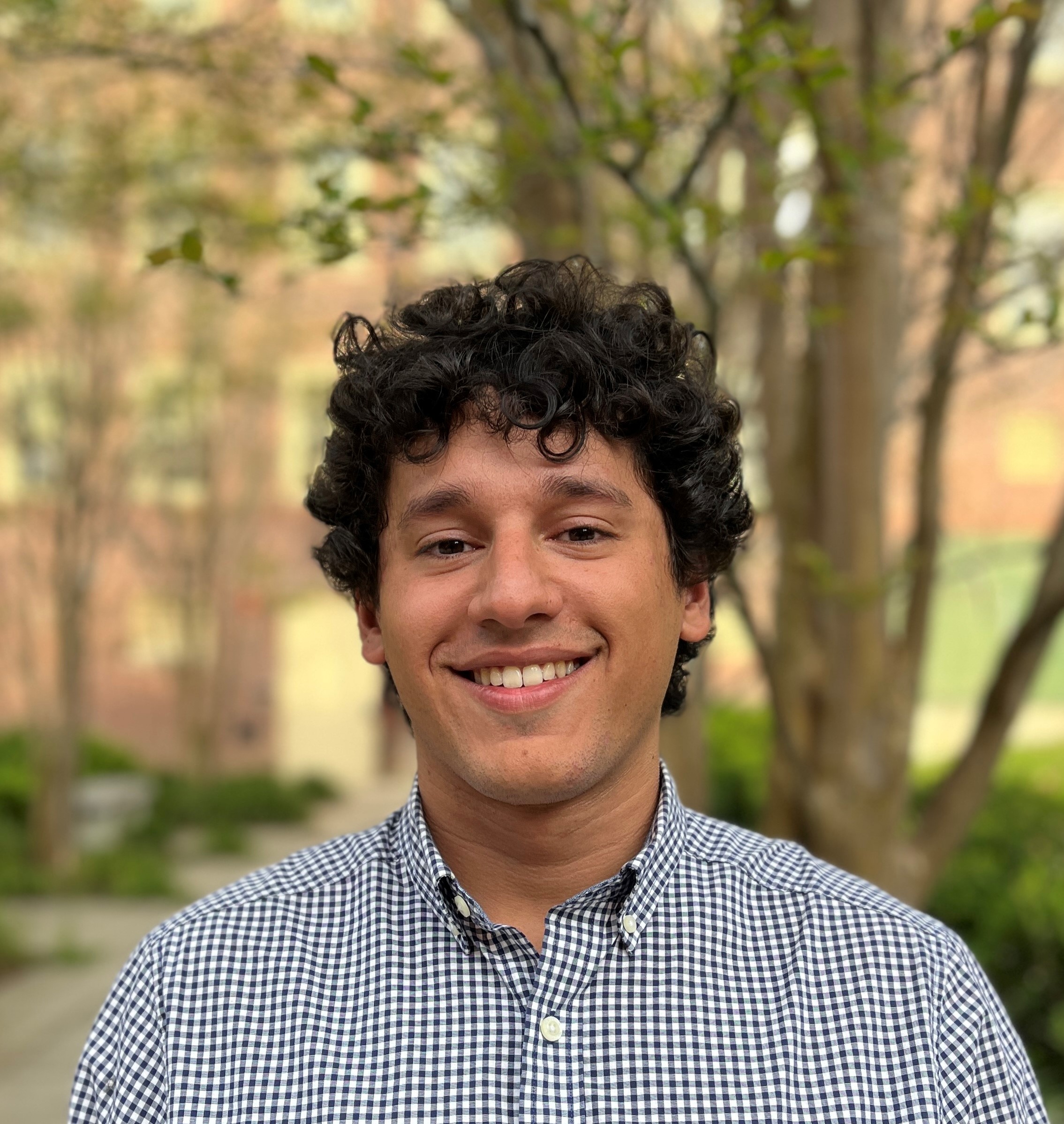
BIO
My name is Vincenzo DiCorpo and I'm a second-year chemical engineering major at FSU. I was born and raised in Ft. Lauderdale, and I've always been interested in STEM (especially chemistry and physics) and the opportunities those related fields present. My research area currently focuses on renewable energy, sustainability, and hydrogen-powered aircraft, especially the mechanical and electrochemical aspects of hydrogen fuel cell (FC) powertrains in planes.
Outside of school, I enjoy going scuba diving with my friends, playing music, and practicing my bilingual skills (in Spanish and Portuguese).
The H2 Takeoff: The Dawn of Hydrogen-Powered Aircraft
Authors: Vincenzo DiCorpo, Dr. Sastry PamidiStudent Major: Chemical Engineering
Mentor: Dr. Sastry Pamidi
Mentor's Department: Electrical & Computer Engineering Mentor's College: FAMU-FSU College of Engineering Co-Presenters: None
Abstract
The use of fossil fuels supported the human progress over recent centuries: powering engines, generating electricity, and creating new materials. Fossil fuels have paved the road to our modern globalized world. Despite these numerous advances, the increasing link between their byproducts, greenhouse gases (GHG), such as carbon dioxide, and anthropogenic climate change are clear, prompting many industries to investigate alternative fuel sources for electricity generation and transportation. The aviation industry seeks alternative fuels, as global air travel contributes 7% of total GHG emissions. The most promising option for airline decarbonization is green hydrogen, which has an energy density of 120 MJ/kg, compared to diesel and gasoline (45.5 and 45.8 MJ/kg, respectively). Green hydrogen, as opposed to grey and blue hydrogen, is produced entirely through renewable sources, including solar, nuclear, and wind power through water electrolysis. The environmental benefits of hydrogen led many companies to design hydrogen-fueled aircraft, like ZeroAvia’s ZA600 zero-emission engine for 9-19 seat regional turboprops, and Airbus’s ZEROe project. NASA has been working on developing the large liquid hydrogen-fueled turbo-electric aircraft, N3X. The research and developments promise a green future for aircraft innovation and the reversing the damaging effects of global warming.
Keywords: Hydrogen, fuel cell, hydrogen-powered aircraft
24th annual Undergraduate Research Symposium, April 3, 2024
Christine Lezama Poster Session 4: 2:45 pm - 3:45 pm /208
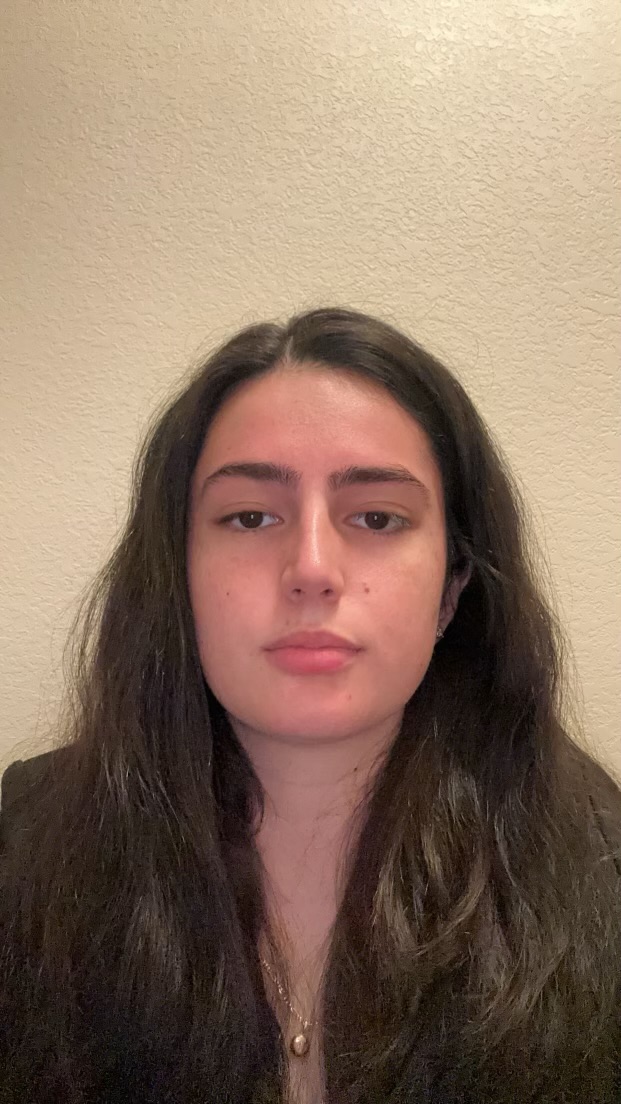
BIO
Hello, I am Christine Lezama, a sophomore in the pre-med track. I am currently a UROP student working for Dr. Hank Bass' Lab here at FSU. As a part of this lab, I have gained experience in the areas of microscopy and genomics, focusing on the process of DNA replication in eukaryotic cells (maize root tips cells). The project's main goal is to redefine previously known early, middle, and late S phase stages and figure out stage durations and prevalence. From my research, I have gained a strong interest in genetics and cytology and I would love to pursue opportunities in these fields.
Systematizing DNA Replication Patterns Using Dual Label 3D Imaging in Maize
Authors: Christine Lezama, Hank W. BassStudent Major: Cell and Molecular Neuroscience
Mentor: Hank W. Bass
Mentor's Department: Biological Sciences Mentor's College: Arts and Sciences Co-Presenters:
Abstract
Complete and accurate replication of genetic material is required for cells to grow and divide. Accurate genome replication is essential for plants to achieve optimal productivity, serving as the foundation of the food chain and agriculture. To better understand DNA replication in plant cells, we work with collaborators at NCSU to visualize DNA synthesis using 3D microscopy of nuclei from maize root tip cells. The Bass Lab previously observed unique microscopic patterns of DNA Synthesis (S phase) at different time points within the S phase, for instance, early S phase nuclei show DNA synthesis staining patterns that we classify as "distributed" throughout the entire nucleus. In contrast, late S phase nuclei show DNA synthesis staining patterns that we classify as small “patchy” regions. In our study, we employed sequential DNA staining methods, specifically dual labeling techniques with green and red DNA synthesis dyes, to chronologically organize and identify the various patterns (or pattern pairs) in relation to S phase progression. In this way, we gathered image pairs reflecting immediately sequential replication timing patterns and quantified their relative abundance. The pattern categories were Background, Disbursed, Patchy Disbursed, Patchy and Knobby, and finally Knobby, and the pattern pairs quantified were all possible pairs of these. Analysis of over 500 nuclei allowed us to determine how long cells are in each stage of the cell cycle, and to subdivide the patterns beyond the previously known three (early, middle, late) into their proper chronological order.
Keywords: Microscopy, Genetics, Nuclei, DNA replication, Imaging
24th annual Undergraduate Research Symposium, April 3, 2024
Jenny Harper Poster Session 3: 1:30 pm - 2:30 pm /222
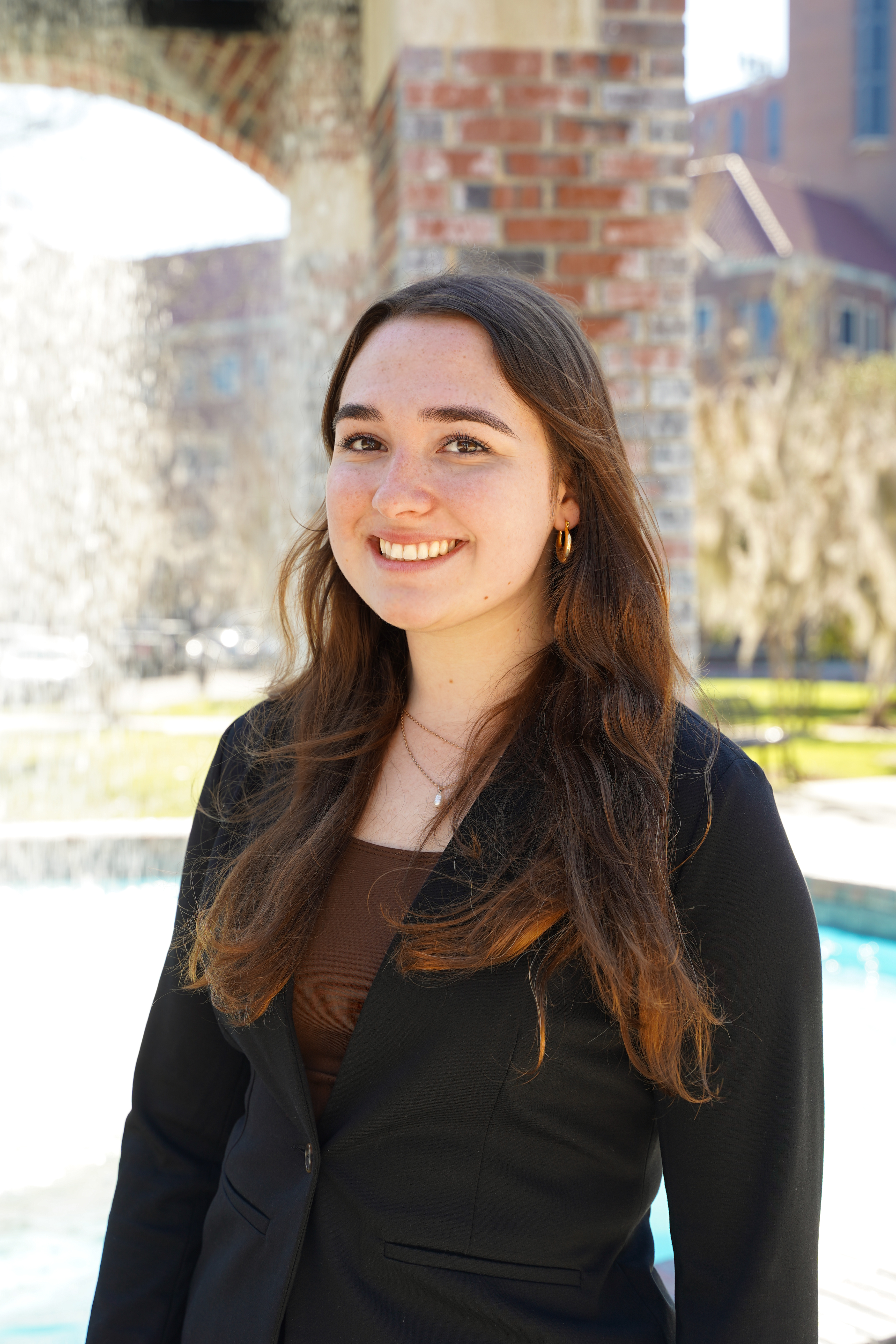
BIO
I was born and grew up in Pembroke Pines, Florida, graduating from Pembroke Pines Charter High School in the year 2022. I am currently attending Florida State University and am striving for a bachelors degree in Biology. I hope to attend medical school after college and specialize in anesthesiology. I am currently interested in research relating to topics of the cardiovascular system.
Protein Engineering of Alpha-actinin Mutant Proteins to Test Biological Role in the Heart Muscle
Authors: Jenny Harper, Christopher SolisStudent Major: Biology
Mentor: Christopher Solis
Mentor's Department: Department of Heath, Nutrition, and Food Sciences Mentor's College: College of Health and Human Sciences Co-Presenters: Victoria Montalvo and Claudia Hernandez
Abstract
The heart has the ability to grow in size to a healthy caliber, similarly to the growth seen in many athletes and gestating woman. However, many different cardiovascular diseases and pathologic causation’s such as Hypertrophic Cardiomyopathy (HCM), prolonged bed rest, and heart failure with reduced ejection fraction (HFrEF) have the potential to cause an inimical physiological discrepancy between the mechanical capacity of the heart, and the human body’s hemodynamic demand. We ultimately seek the understanding as to how cardiac muscle cells recognize, process, and respond to internal and externally-driven stimuli fluctuations produced by mechanical stimulation for short, as well-as prolonged terms. Specifically, we will be studying the role of post-translational modification of the structural protein α-Actinin within cardiac muscle cells in response to mechanical unloading. The approach is to introduce pseudo-phosphorylation sites in an α-Actinin plasmid to subsequently express these constructs into cardiomyocytes. We have identified that the plasmid pAcGFP-N1 is the most suitable for our work. We will continue with identifying the primers needed to induce mutagenesis to introduce the following pseudo-phosphorylation’s: Ser50, Ser147, Thr43, and Thr237 for Aspartic Acid. The primers to induce the listed pseudo-phosphorylation sites were identified. Our results will help understand the mechanisms of sarcomere assembly driven by phosphorylation of α-Actinin.
Keywords: Protein, Engineering, Heart


